18 March 2011; Here's how it looked with 2 tiny, but bushy culms when I got it, and planted it into a 15 gallon container.
24 May 2011
29 May 2011; On 19 May 2012, this bamboo happened to produce 5 shoots, but unfortunately only 3 of them survived, but at least it ended up getting much taller.
4 June 2011
11 June 2011
30 July 2011; I planted this into the ground because I knew it could spread its rhizomes a lot farther. Having culms further apart should allow more photosynthesis, more space for each culm, and higher uptake of water & nutrients.
4 September 2011; When temperatures cooled down, I ended up adding grass clippings and roofing tiles to keep the soil a little warmer in an attempt to extend the season which worked to a certain extent as rhizomes grew as long as 3ft.
Here are some of its rhizomes
3 November 2011; As temperatures dropped, I made a desperate attempt to extend the season a bit further by building a temporary greenhouse around the grove, but by the middle of december, it got too cold inside so I had to go ahead and tarp it to the ground.
6 March 2012; By the following spring when I un-tarped it, the leaves looked fine at first, but about 1/3 of the leaves ended up turning brown and falling off either due to the cool wet conditions or too much moisture while the plant was tarped to the ground over 2 1/2 months.
13 April 2012; I ended up re-tarping this bamboo until April when it warmed up a bit more and the soil was no longer as wet. I suspect that the main reason may be that the leaves are not transpiring fast enough at cool temperatures to handle the amount of moisture in the ground at the time. Here's the plant again looking a bit sad in April.
15 April 2012; Leaf buds started appearing
9 May 2012; Luckily by May I could tell that this plant was going to re-leaf back to the tips, at least on the 2011 culms, but the old culms only releafed about half way. All of the old leaves ended up yellowing and dropping off to get replaced by new ones.
15 May 2012; This bamboo finally made its 1st shoot which was a sign of re-leaf because that shows that it is still alive after its 1st winter, but it was also a bit disappointing to see that it only produced 1 shoot which ended up being no more than 0.4 inches in diameter by 5ft, which is about the same as the largest shoot from last year. I believe this reduction in production may be a combination of when I un-tarped it too early along with the massive amount of energy expended in rhizome production from September through December. The rhizomes were produced 1-2 months late, and never had a chance to mature.
20 May 2012; I added some clear plastic mulch to help speed up the shooting process, and hopefully encourage more shoots which never happened
27 May 2012
2 June 2012
5 July 2012; This ended up being the only shoot that was produced however all the culms appear to be leafing out more than any other bamboos so far, and the rhizomes that were produced last fall are rooting out. They tried to whip shoot 3 weeks ago as the tips of the rhizomes 4ft away from the culms tried to grow out of the ground however there has been a drought and heat wave since then which seemed to cause them all to abort, but I've been watering this consistently in the past week to try and pamper it to produce more shoots or rhizomes this year. There has also been about 50lbs of cow manure, myccorhizae, rooting hormones, milorganite, and 5 bags of grass clippings added as well. It is still leaf curling due to the 90F degree heat and sunny/ dry conditions we've been having lately.
Here's the remaining whip shoot which still has a chance as 3 of its buds have suddenly started to swell in the past 3 days as if they are trying to turn into branches. I believe that this means that the bamboo is mostly finished with producing that 1 shoot started 8 weeks ago, and just starting to overflow with energy which will result in either the production of new rhizomes or new shoots. I hope that some better shoots will be produced within the next month, but if this one grows, it still equates to more leaves contributing energy to the plant. Once this plant has over 10 good culms, then it is time to start taking divisions, being very careful not to hinder the spread or vigor of the grove. At this point, it looks like the growth for next spring will be much more impressive as long as it is protected well overwinter in this zone 6a climate.
12 November 2012
This is back in the greenhouse for the late fall and winter, and the greenhouse actually got destroyed by the snow cover however the moso bicolor and the rest of the plants inside seem to be fine. I will leave it on until it is relatively warm and dry enough so that leaves don't burn due to cool wet conditions again. It is late February now, and the coldest it ever got in this greenhouse was 18F over the winter so as long as there are no burned leaves, the shooting season should be very impressive for 2013.
I ended up leaving the greenhouse on all the way until April 1st to ensure that there were no late freezes as the bamboo never experienced anything lower than 14F through the winter being inside the unheated greenhouse.
2013
Shooting season this year turned out to be much better than last year as there were up to 9 shoots ranging from sizes of 5/8 inch up to 1 2/3 inch for the big one. I have had to try to dwarf some of these shoots as this heavy of a shooting load can cause many shoots to abort if I don't try and reduce the energy consumed in producing each shoot. I don't care too much about the lower branchless internodes as they don't produce photosynthesis. Here's the shooting season.8 May 2013
This is the 1st 1 incher
11 May 2013
This is the largest shoot I have ever seen in my garden which turned out to be around 1 2/3 inches when the sheaths fell off.
Here are some others
16 May 2013
18 May 2013
21 May 2013
These 2 are in danger of aborting likely due to the big shoot taking up most of the energy as they made very little growth in 3 days while all the other shoots made much more growth, but I peel culm sheaths off to try and keep them alive. 1 inch per day won't cut it so I would rather make them a smaller diameter and keep them alive. They are further away from the grove making the grove allocate less energy to them due to apical dominance.
The ones that are making good progress are pretty obvious based on their appearance.
Here's the smallest one perhaps a bit over 1/2 inch in diameter growing pretty close to the giant.
22 May 2013
The tall ones have surpassed the 5ft tall old culms as they are in the 5-6ft range in this picture.
June 8, 2013
11ft appears to be the limit. 3 other ones aside from the giant one made it, and they range from 7-9ft.
June 28, 2013
They are leafing out now, and this plant is huge in comparison to what it was before this shooting season.
October 15, 2013: 2 of the big culms were divided away, and the 20X10X8 shelterlogic greenhouse was added for protection.
This bamboo is not as charged as it was by the end of last year, but overall, there are about 2X more leaves, and one of the small rhizomes I turned up on purpose actually managed to turn into a little 3ft tall culm which is an indication that there should still be at least a decent shooting season, maybe not as great as the shooting of 2013. The positive aspect is since this plant is big and loaded with lots of leaves, there's a lot of photosynthesis to go on for 2014 so I expect it to be at least capable of a few 8 foot culms.
December 21, 2013: Since there's a brief thaw with temperatures getting into the 50s, I got to check the greenhouse, and one thing I see is browning tips on some of the bicolor leaves, mostly on the older culms. Here's a 2011 culm. This is likely caused by too much soil moisture, but it doesn't look that bad so hopefully it doesn't get much worse from now until spring.
March 7, 2014: The threat of damage is finally over. This plant handled close to 0F inside the greenhouse with very minimal damage which I cut off in order to prevent the allocation of energy towards the partially damaged parts.
Before
I even trimmed up the big culm a little bit as it originally barely had enough energy to produce something this size.
As shown here, the total amount of foliage is greater than that of last spring however the rhizome development below is not quite as mature since a lot was taken off for divisions along with a couple of large culm divisions. I believe shooting should be better than back in 2011, or 2012, but may fail to reach that of 2013's shooting season.
April 23, 2014
I have removed the greenhouse cover once I determined that the soil was unfrozen for good, and after a few good rain storms, leaf buds are starting to elongate. It has been a cool spring followed by an extremely cold winter so I believe shooting season should be at least a month away.
It is perfectly normal for some of the leaves to start yellowing and dropping off in the spring because with moso bicolor, the old leaves should all be shed, and replaced with new ones each year.
May 10, 2014: The first shoot of the year as sprouted. It is only about 2/3 inches in diameter, not as impressive as last year's but there should be quite a few more to come.
The leaves are also starting to yellow and drop which is expected when energy starts flowing into the rhizomes to produce new shoots.
11 May 2014: So far I have 3 shoots visible. I'm hoping to get a dozen of them, but that's determined by how much energy it has. The bigger one is around 1 1/4 inches, not as big as the giant one from last year.
It made sense to pour a 6 inch layer of grass clippings so the shoots can get a nice boost of nitrogen. I also added a second round of alfalfa tea since it contains a hormone triancontanol which is supposed to improve photosynthesis.
This plant will certainly have a good increase in the overall foliage mass this year, even if it never produced a single shoot because 2nd year culms usually have a lot more leaf mass. Here's why. This also give a good representation of the new leaf growth development right when shooting begins.
12 May 2014: Once they get past 6 inches in height, the grow pretty fast as long as temperatures are warm enough.
17 May 2014: The tallest one in the previous picture has reached 20 inches in height, but we are in a cold spell with temperatures ranging from the 30s to the 50s so they are pretty much halted until it warms back up. I am up to 7 shoots now, 5 of them within inches of each other, and 2 rhizome divisions were taken. They are a bit behind last year's in development, but I'm hoping none of them abort if possible.
This one is about 2 feet away which is better since it doesn't have to compete with too many culms for light.
1 June 2014: It looks like I will only end up with 4 culms ranging from 6-10ft in height. This is expected when the plant doesn't fully commit it's energy by yellowing all of its leaves, but on the flip side, rhizome growth should commence earlier, and the plant should get bushier than ever before.
Some branches will bend away from other culms towards more light
I'm glad a couple of them emerged well away from the main clump this year.
Here's a nice 3ft long rhizome curled into a 15 gallon pot starting to activate. It is possible to take divisions right at the start of shooting season as long as a long enough section is grabbed which has rhizome section that is 2 years old.
21 June 2014
After a month, the 2 divisions have definitely taken. They both had around 3ft of rhizome mass and lots of roots.
So far this season, there are 6 shoots total, 2 of them around the 10ft mark, one 8 footer, and three 6 footers. An even smaller 7th shoot might come up depending on if the grove thinks it still needs more. Shoots do not all emerge at once.
This 1 incher appears to have more green pin striping than the rest of the culms.
Back in the spring of 2015, there was a flood that nearly killed off this entire plant since and I found out the hard way that this bamboo species is very weak against wet feet. It has however put out a small survival shoot that has lasted it through last year, and this year, it is already back to 4 new shoots, 2 of them over 6ft, a 4 footer, and one 1-2ft. It's not nearly the greatness it was in 2013, or 2014, but it is back to a good spot where it can gather plenty of energy this year to achieve greatness in 2017.
early spring 2016. The small culm was the only one living in 2015 along with that dried up culm on the left which never had that many leaves last year.
Here's the plant at the end of May.
In late June, it has reached its peak height, 2 of them a bit over 6ft.
28 May 2017
This year, it is finally getting back to a decent size with 3 culms, 2 of them getting pretty tall, approaching the 9ft mark while the shorter one should at least top off at 6ft.



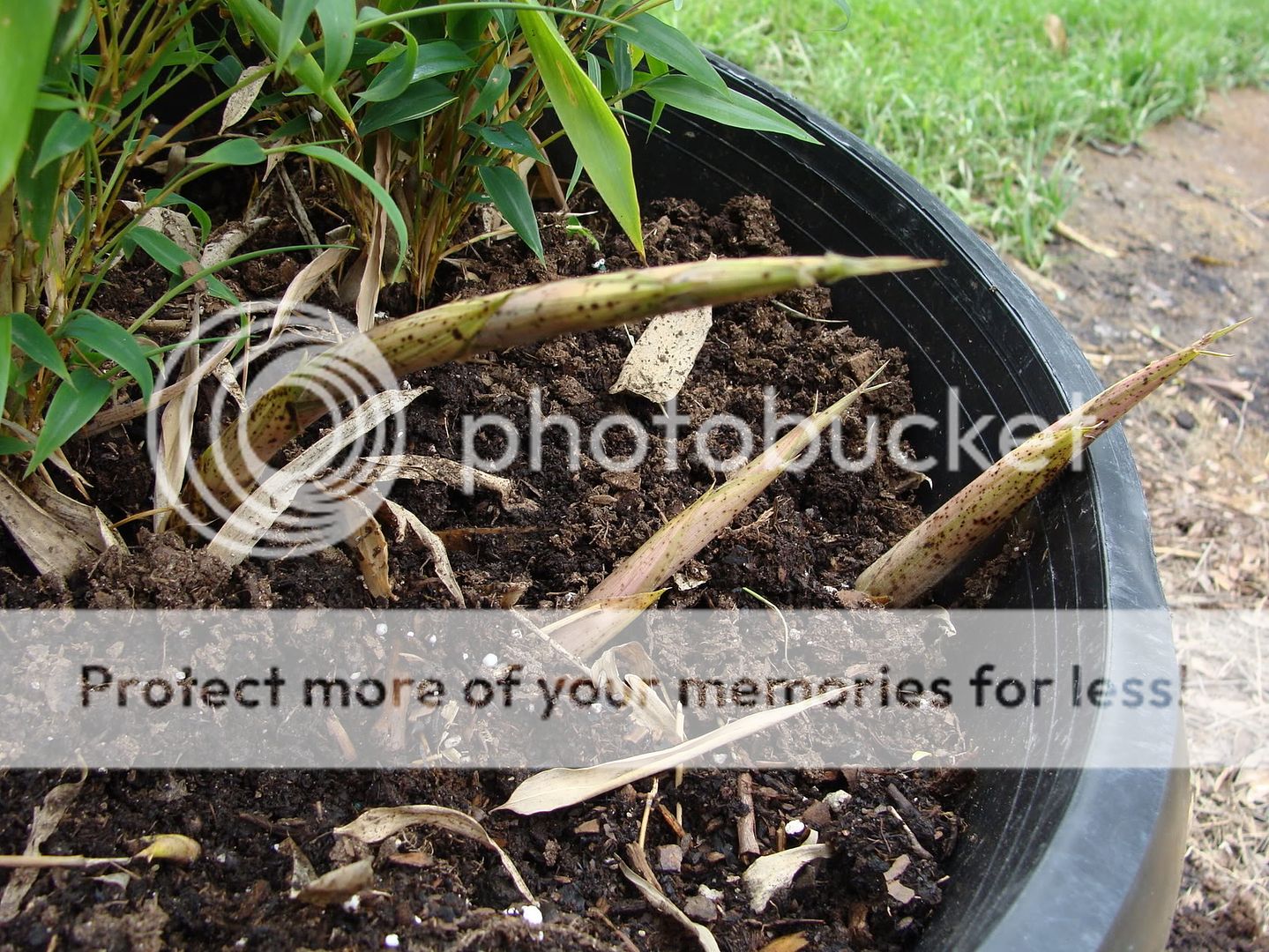
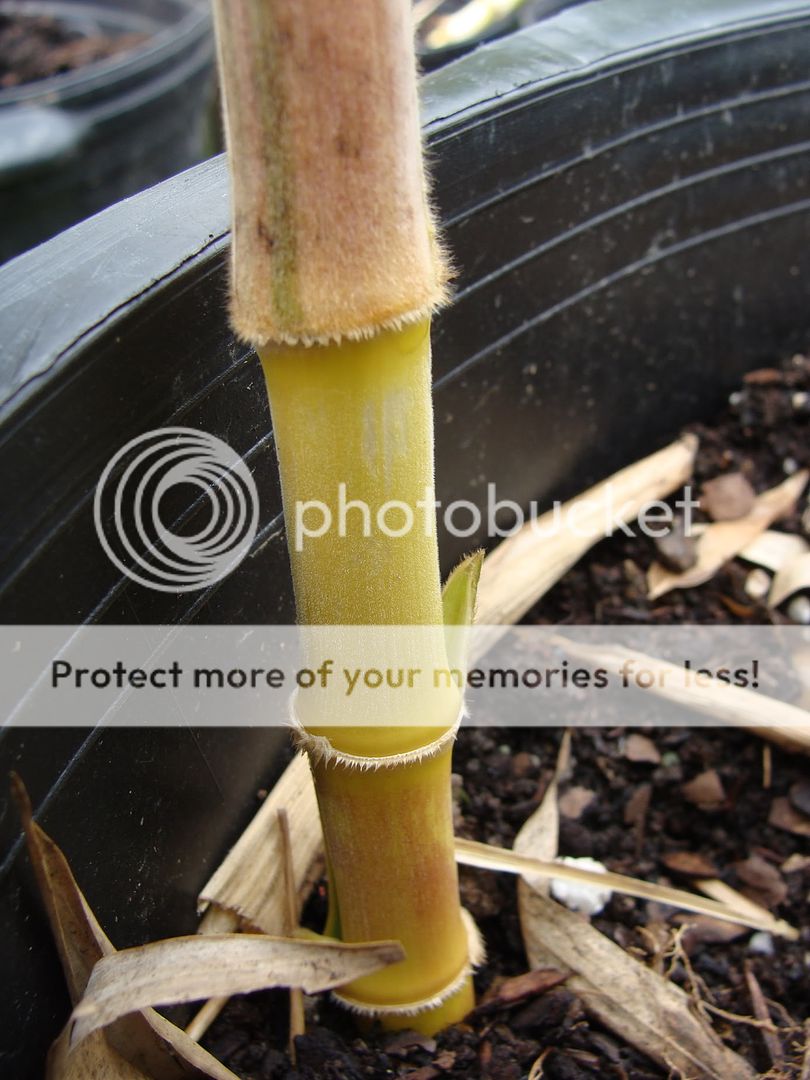
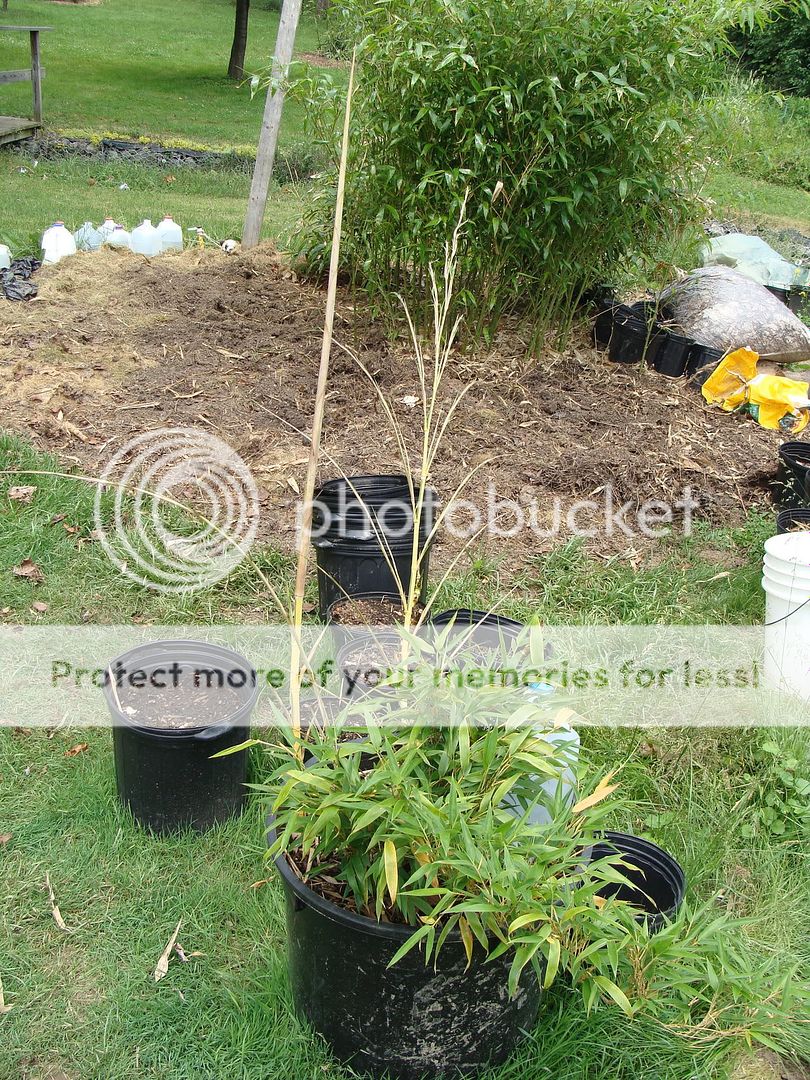
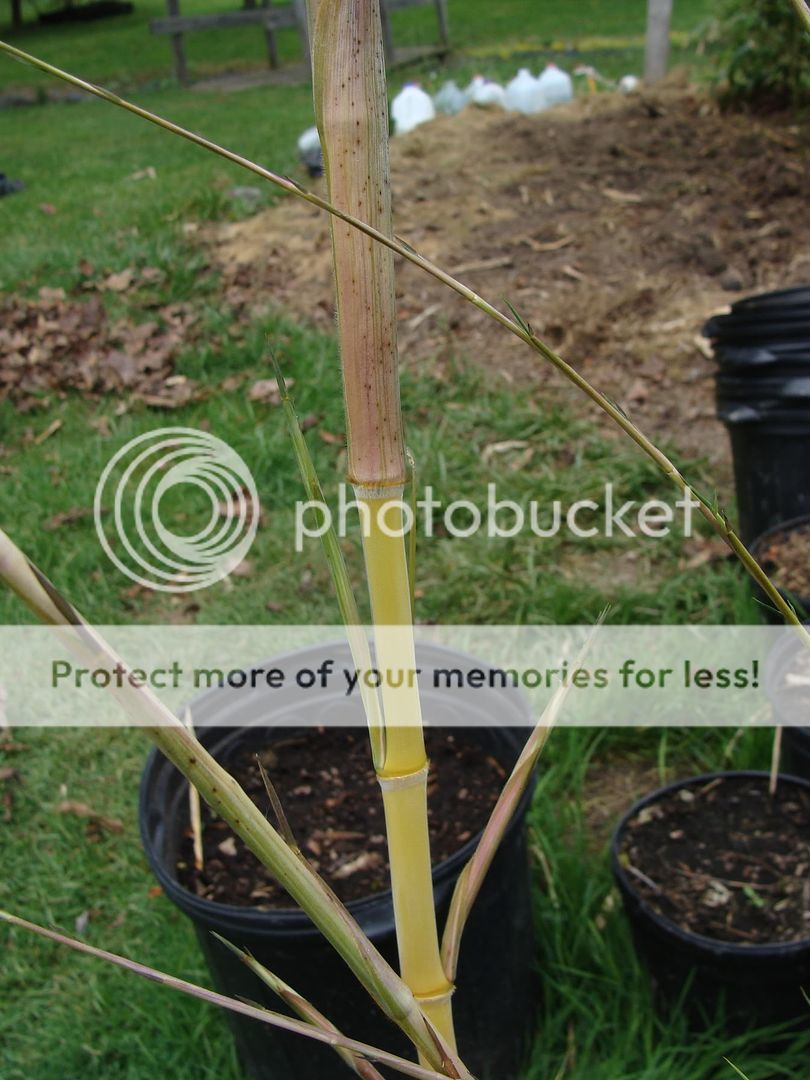
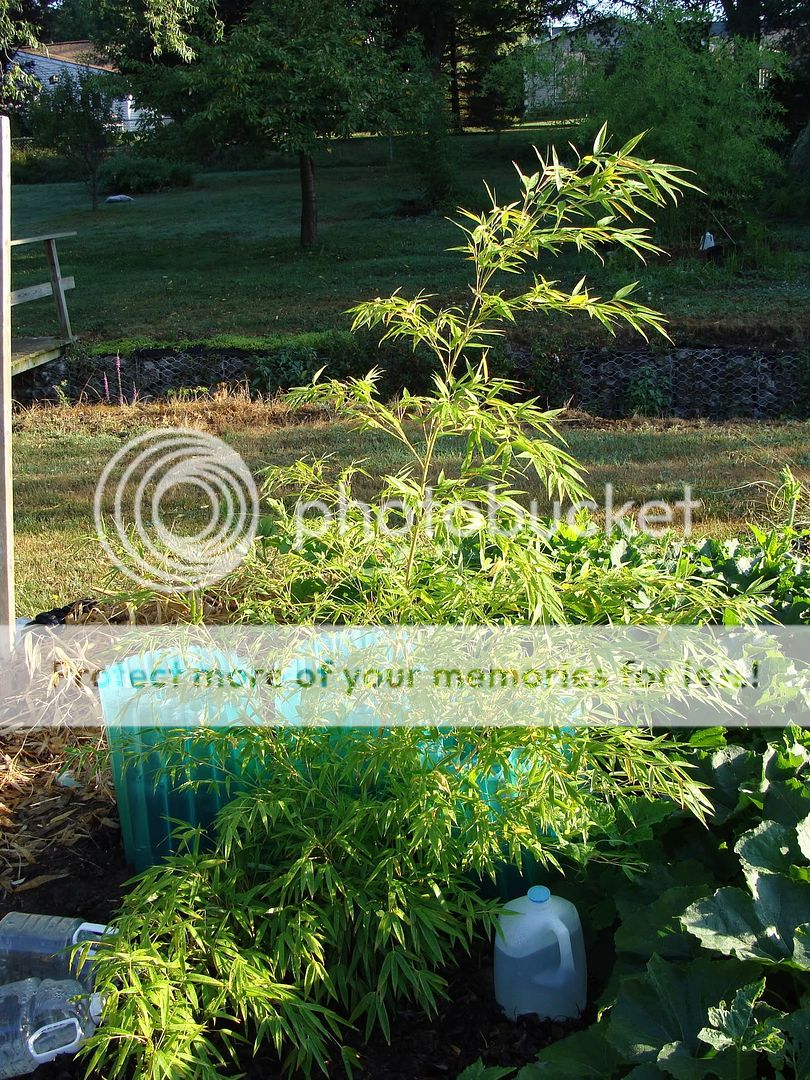
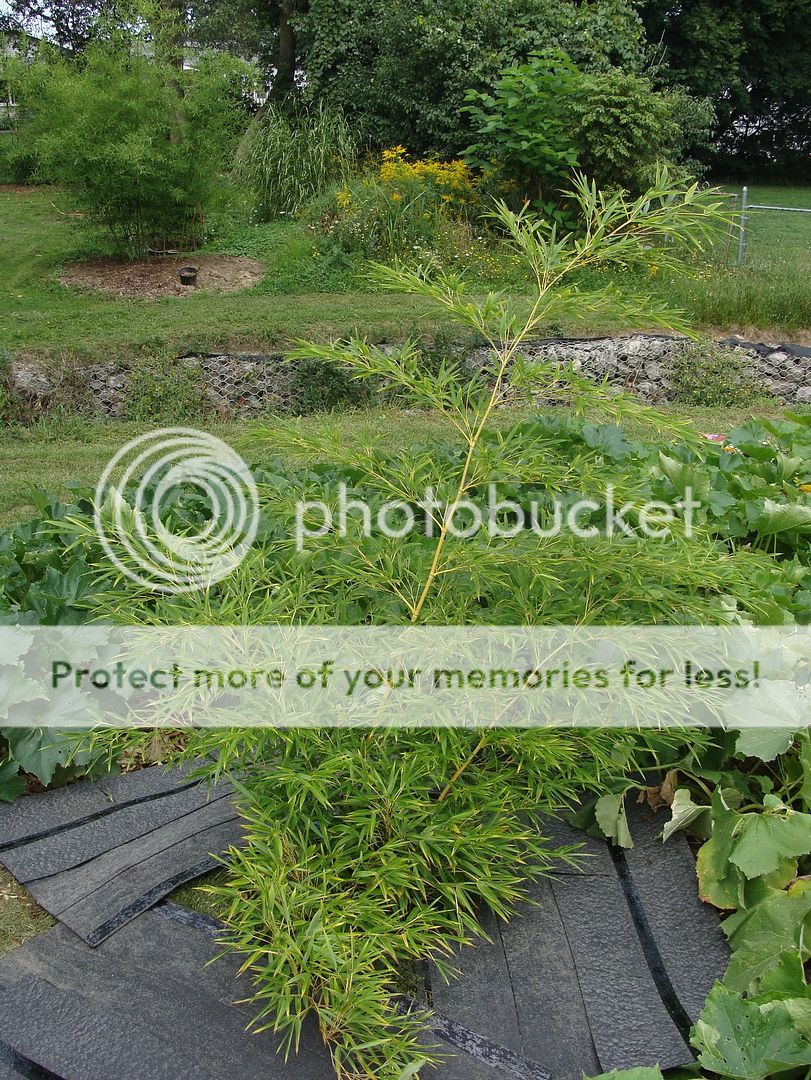
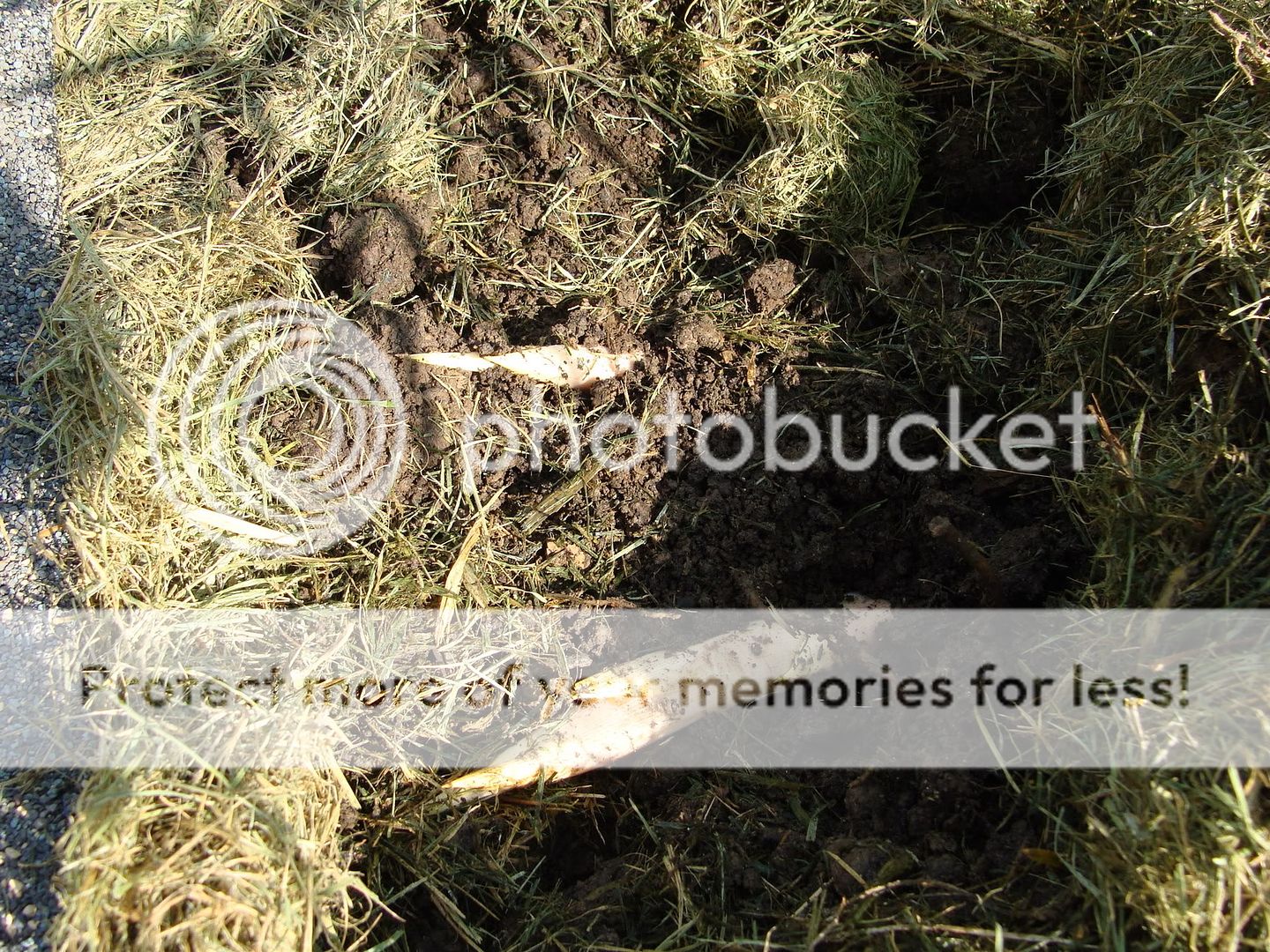
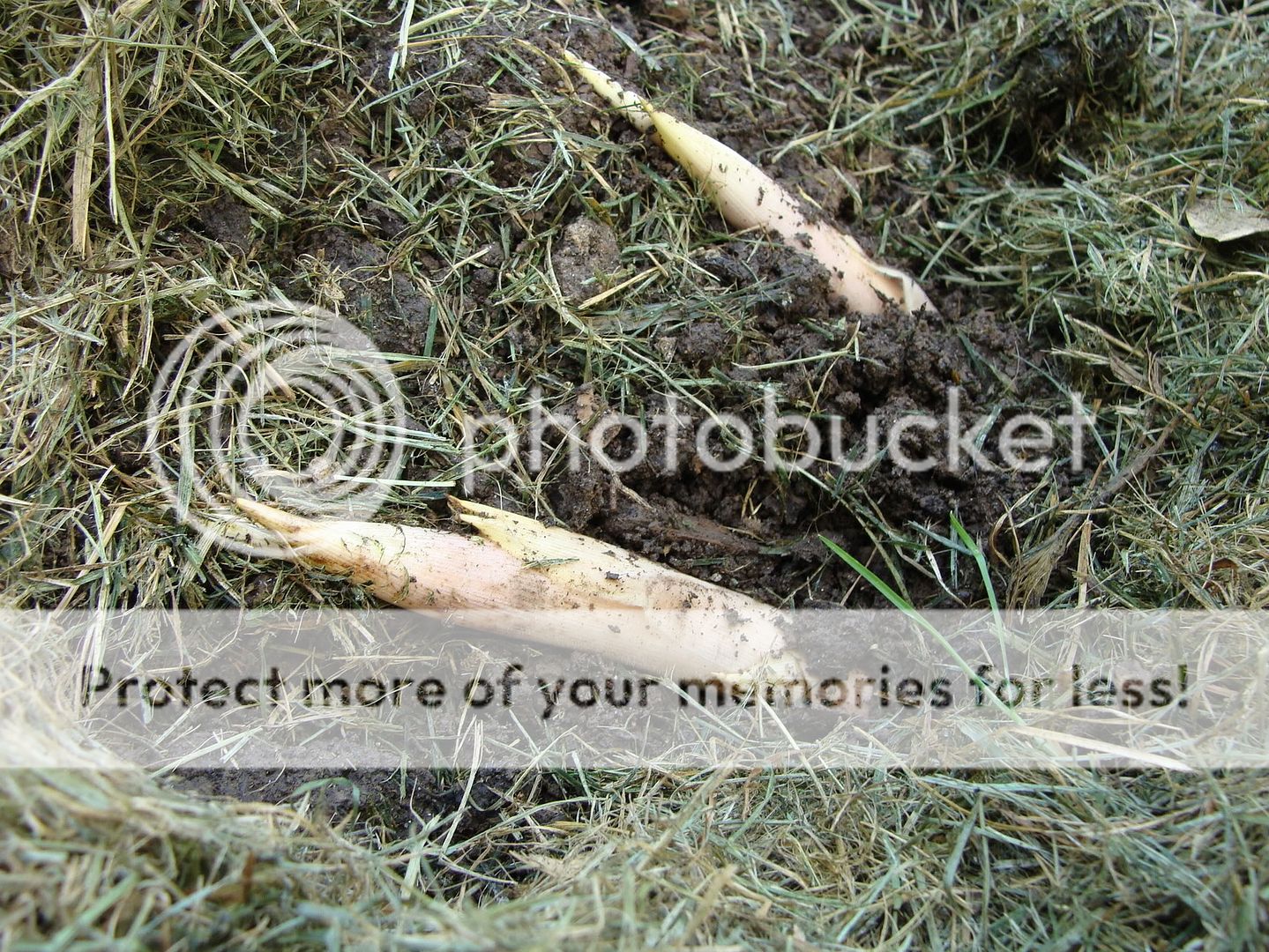
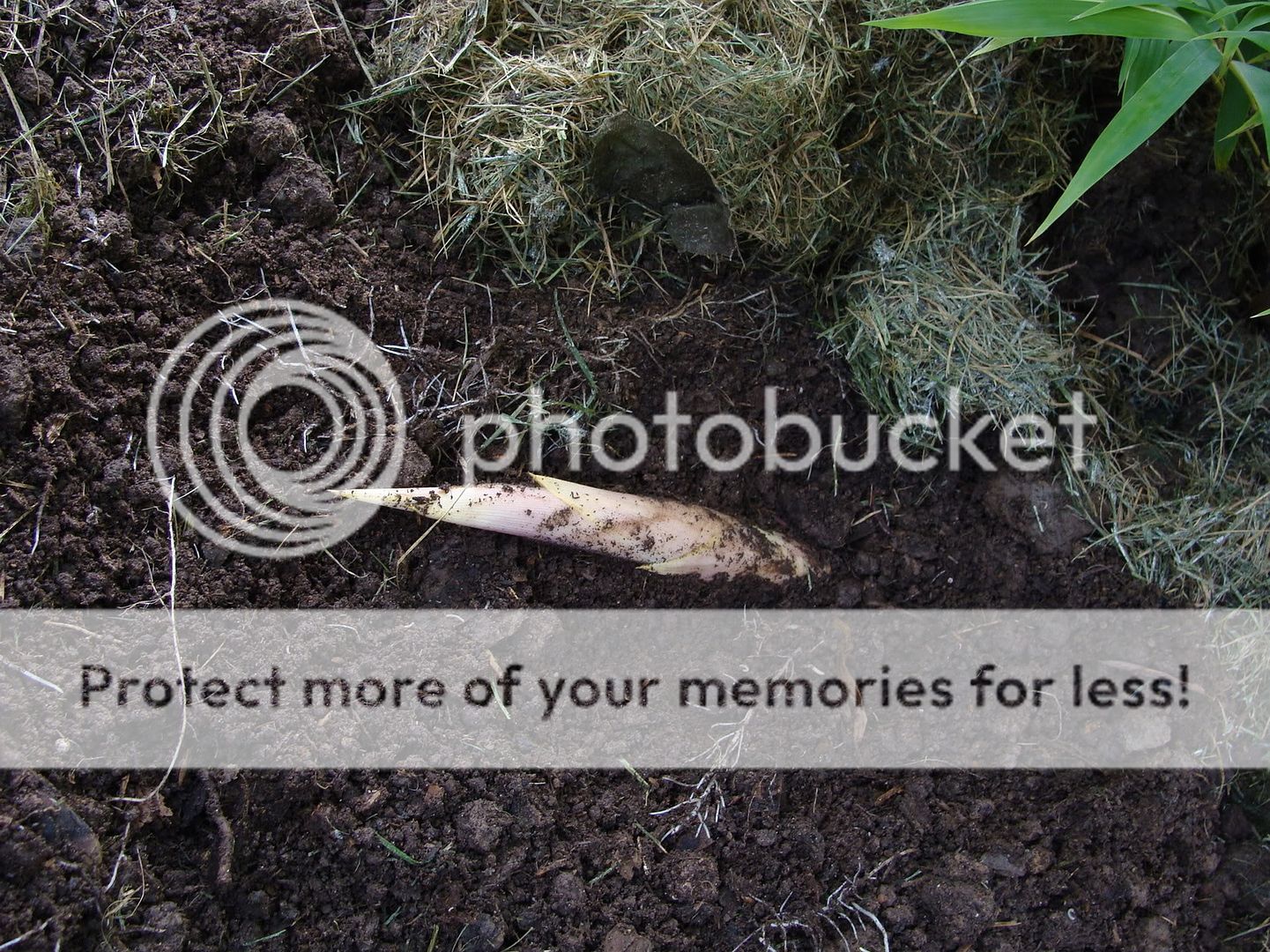
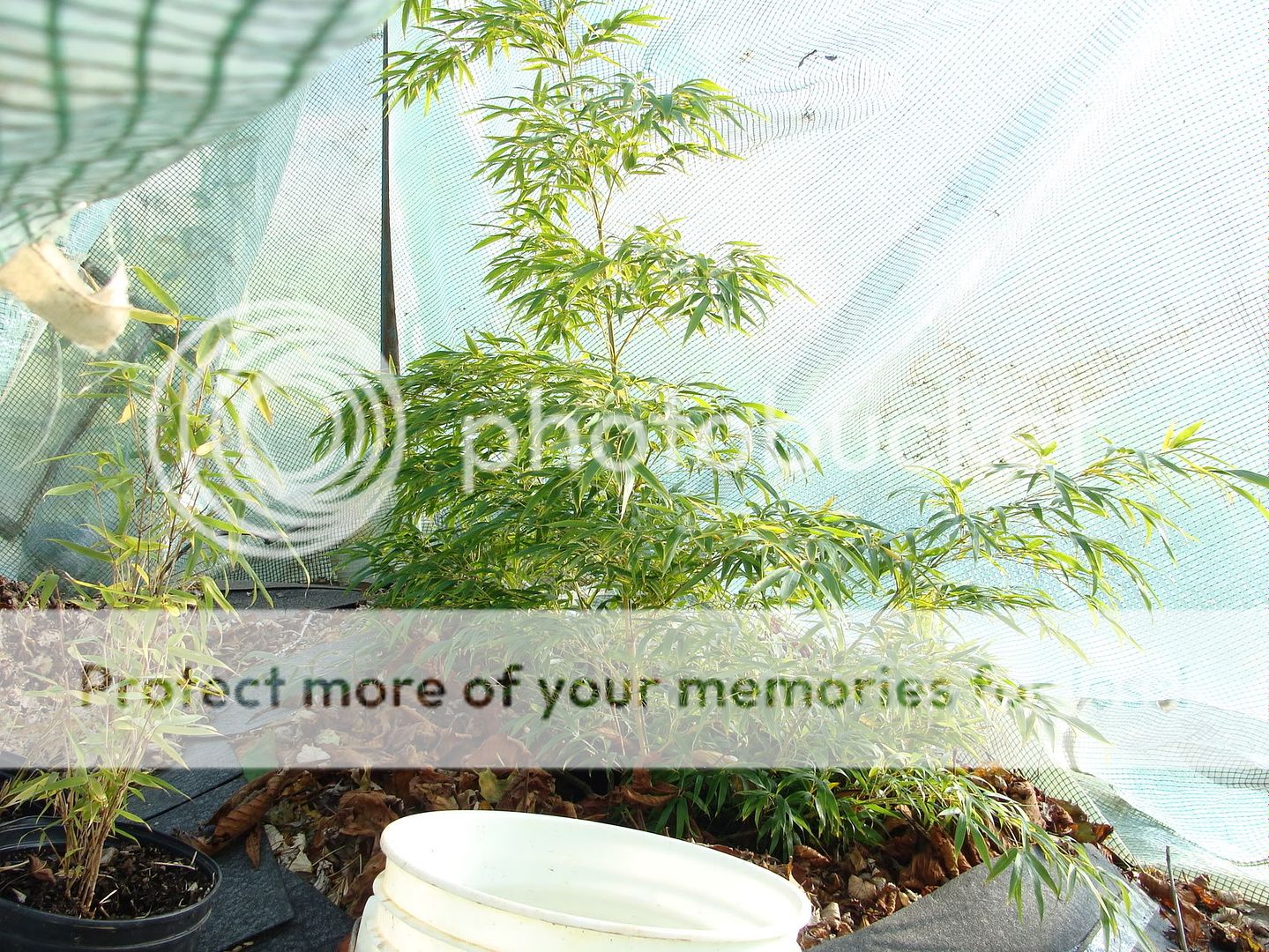

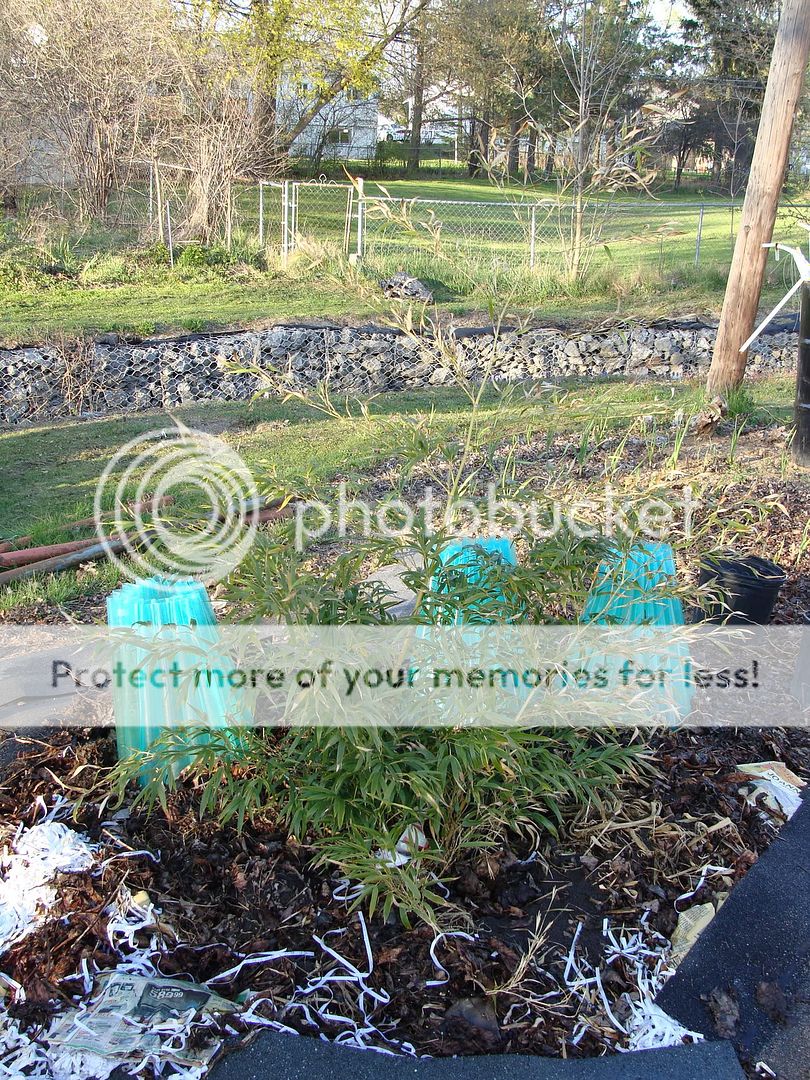
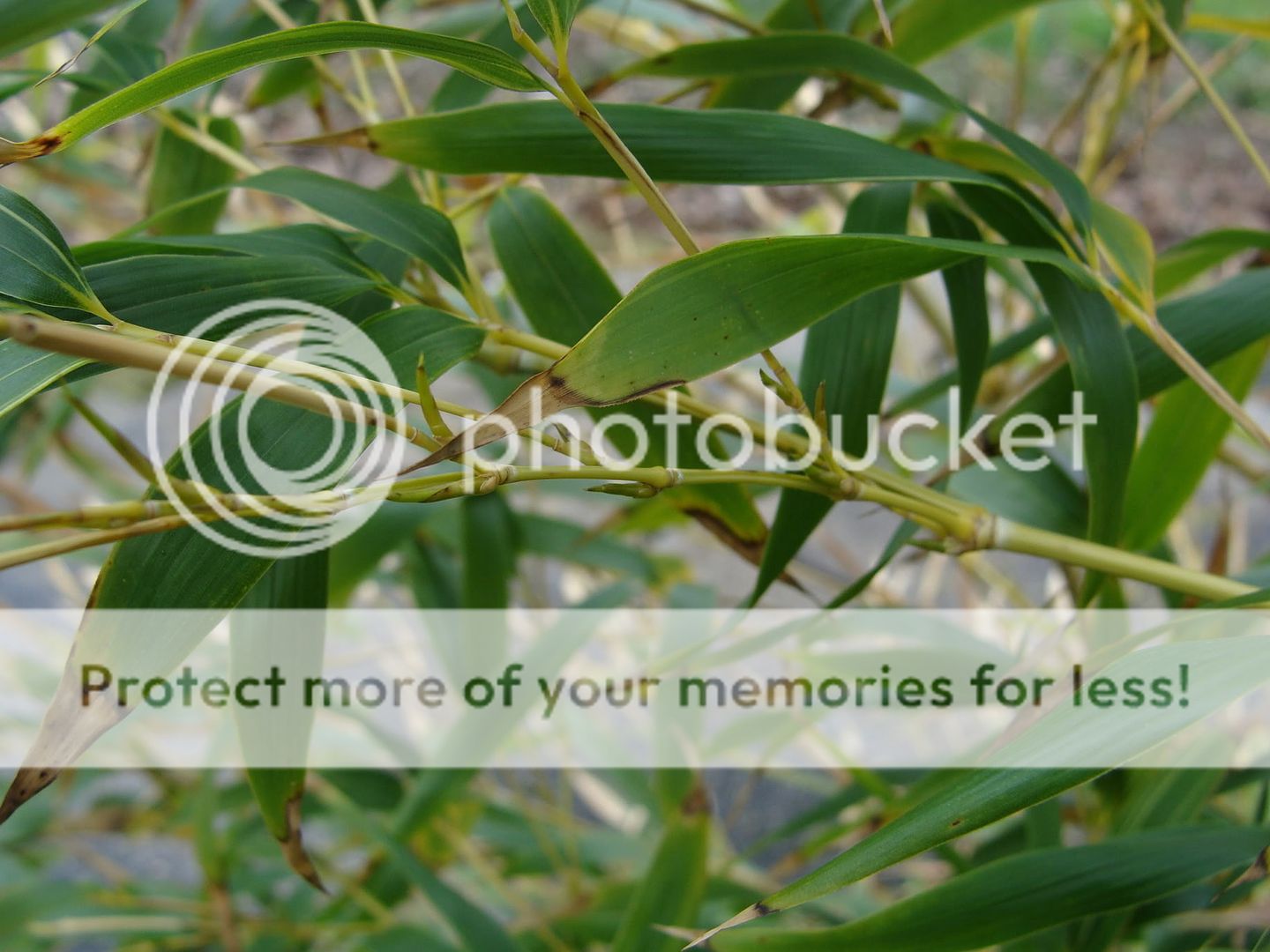
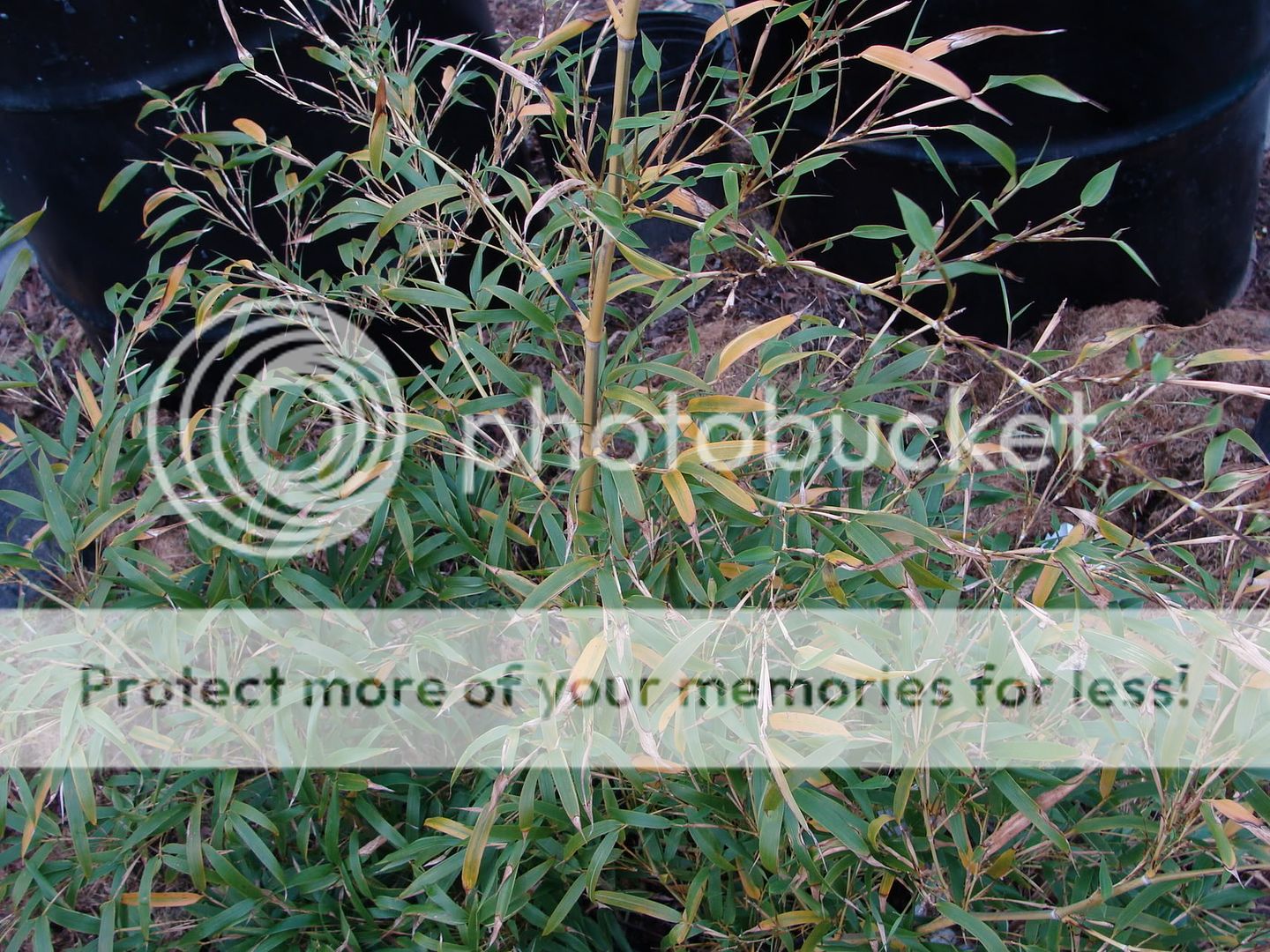
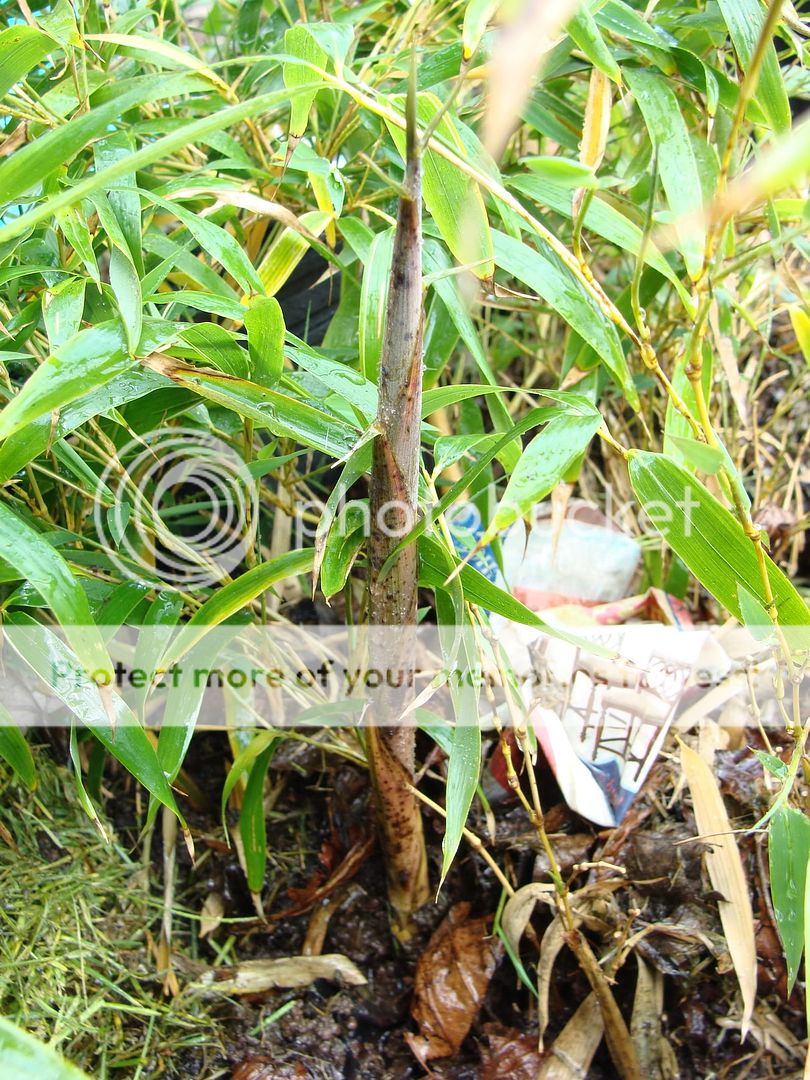
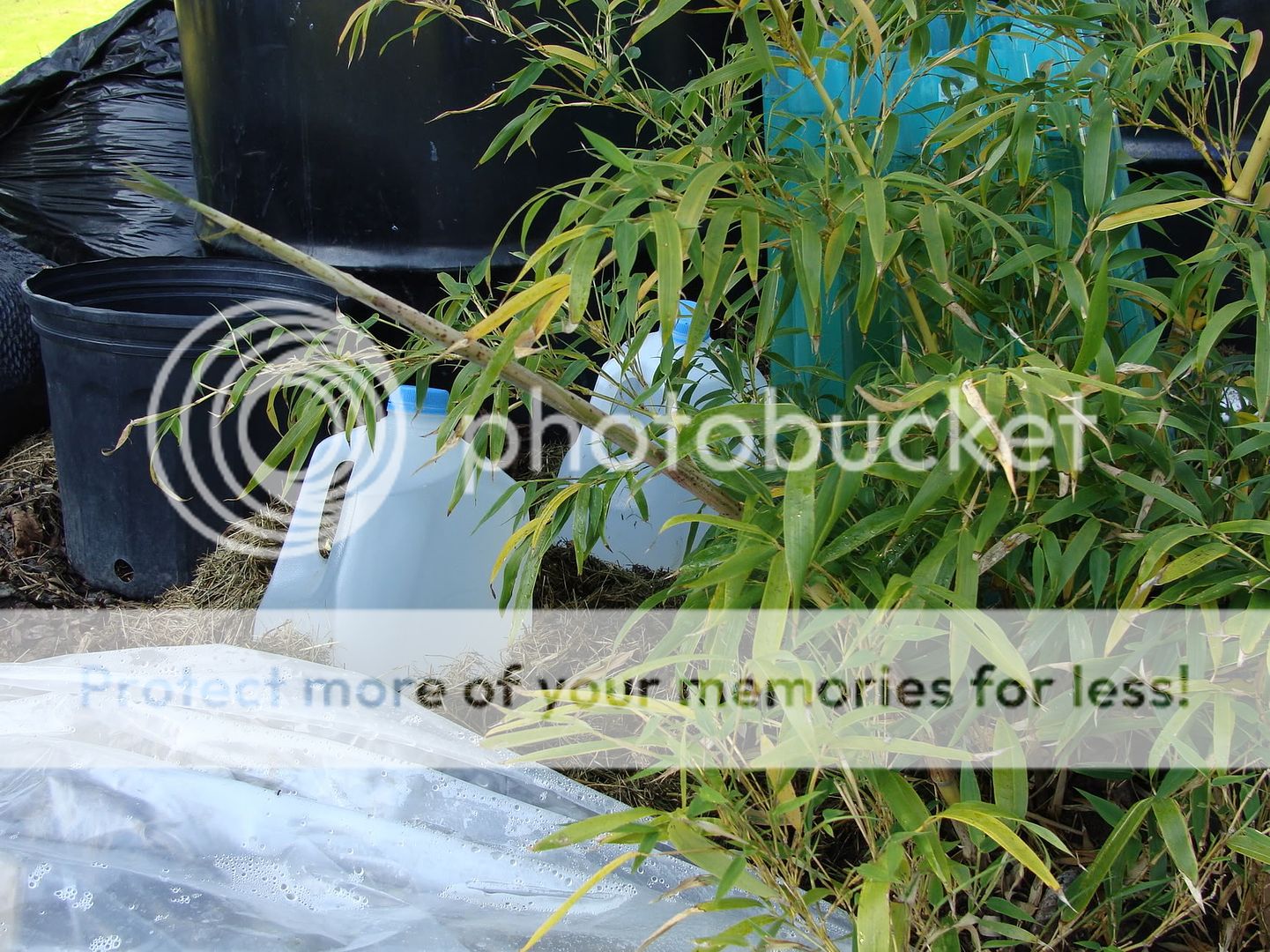
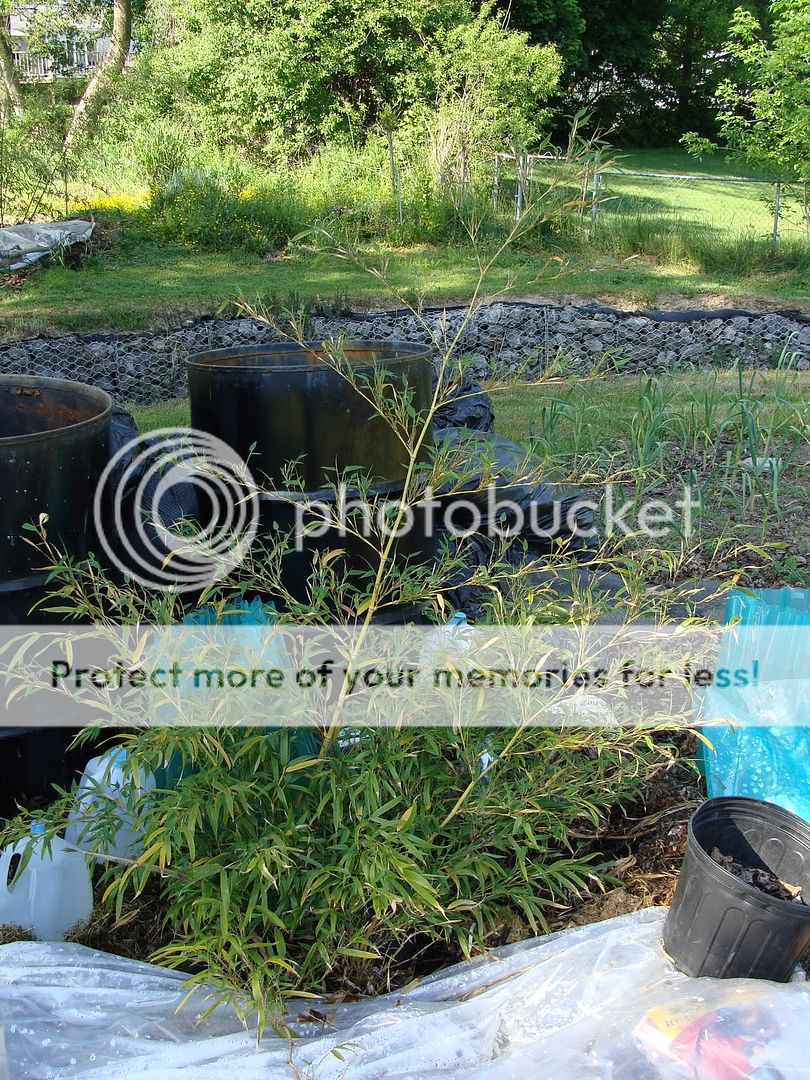

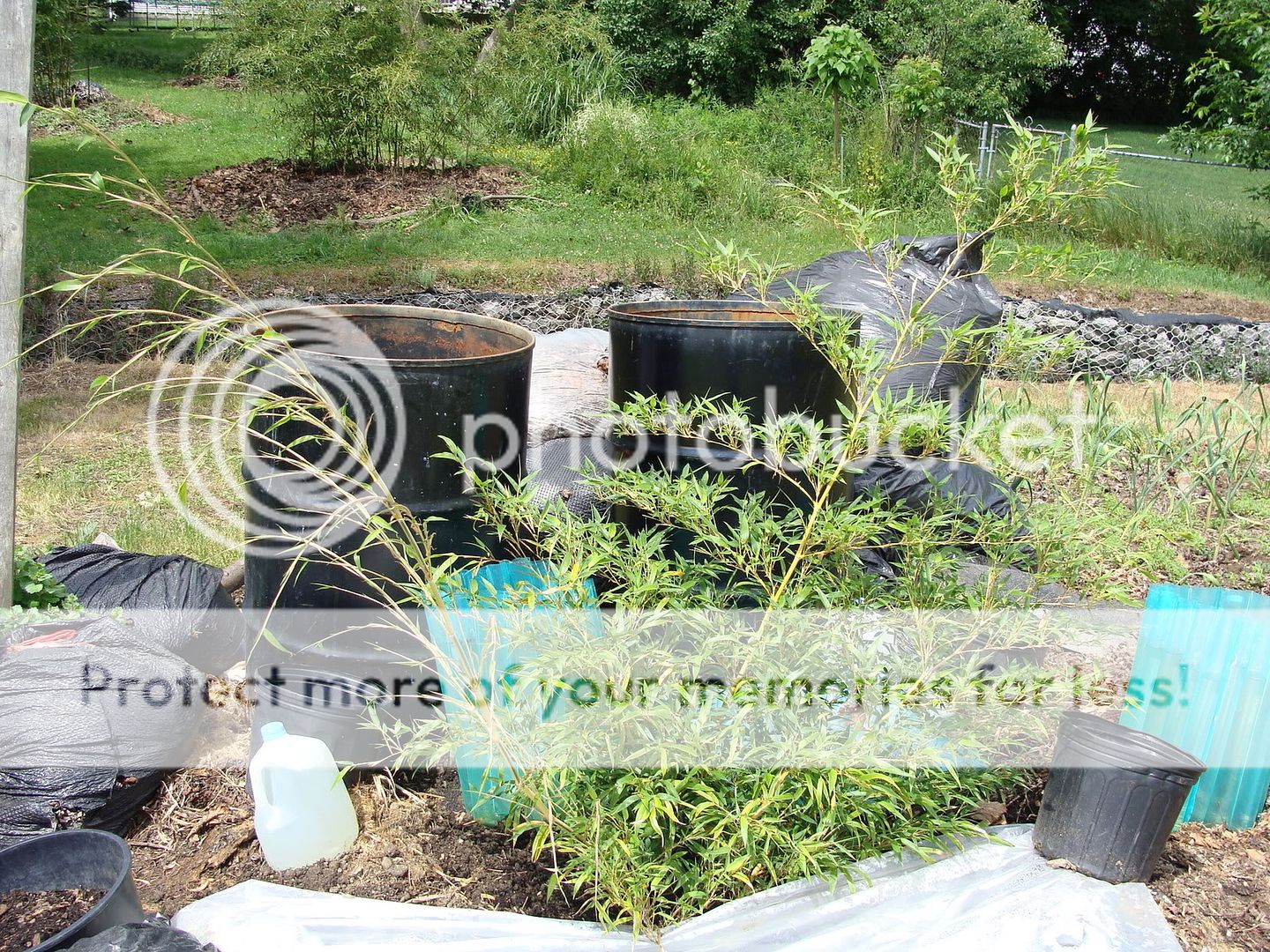
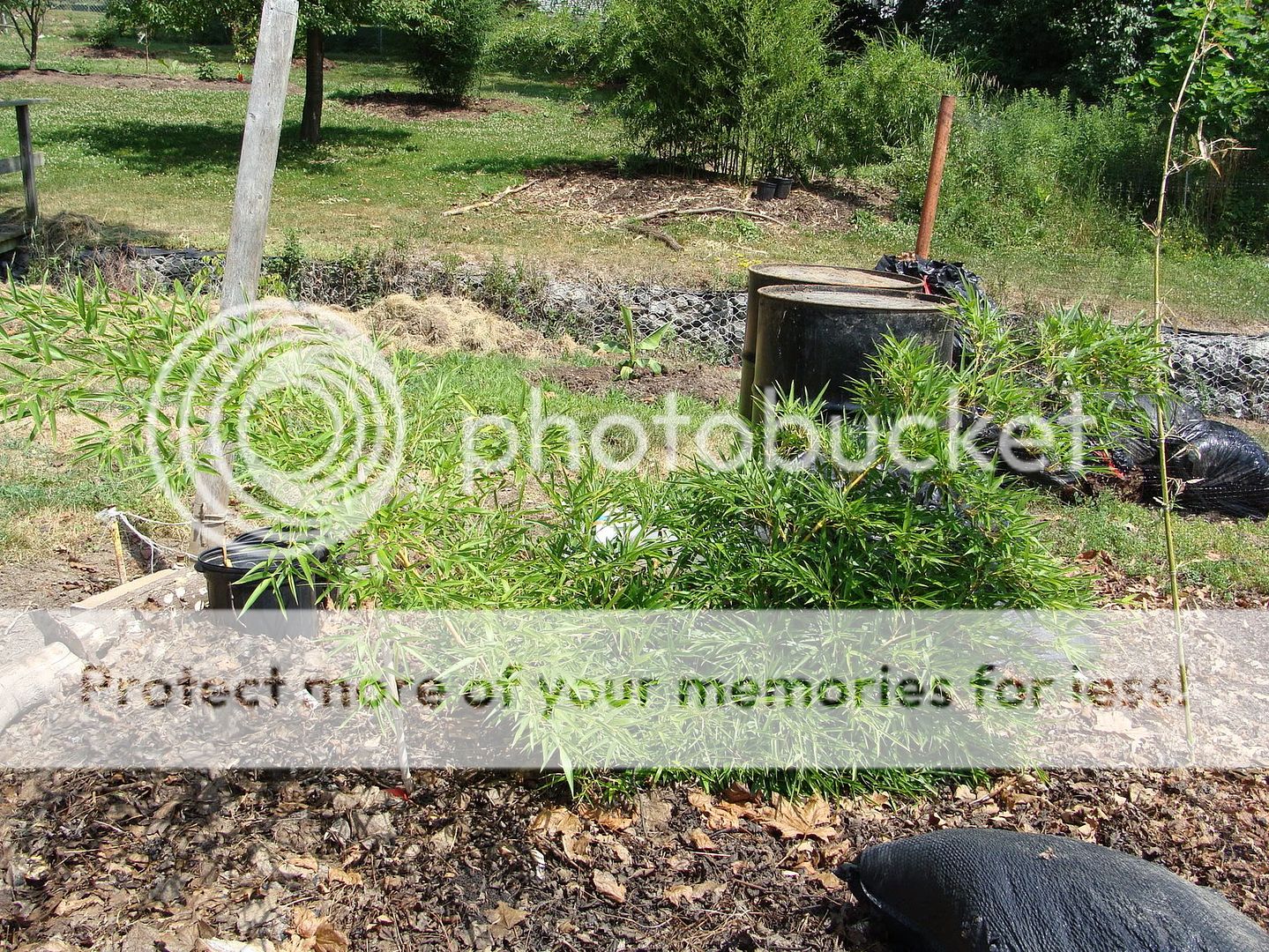
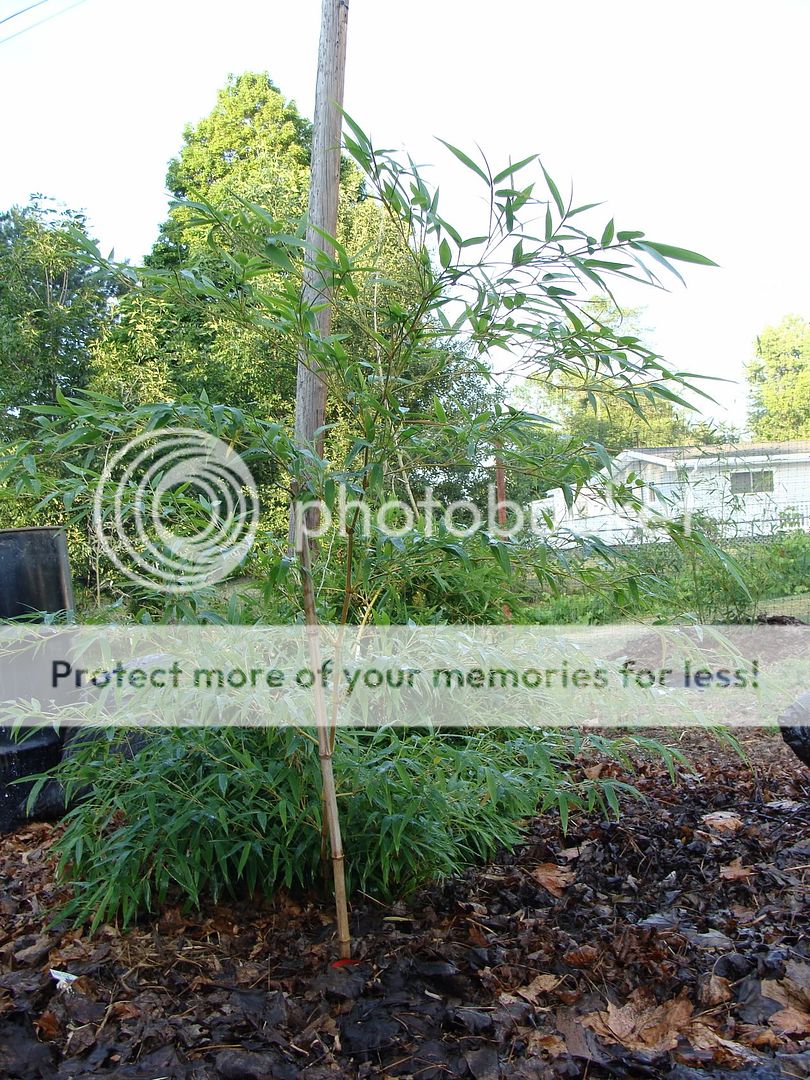
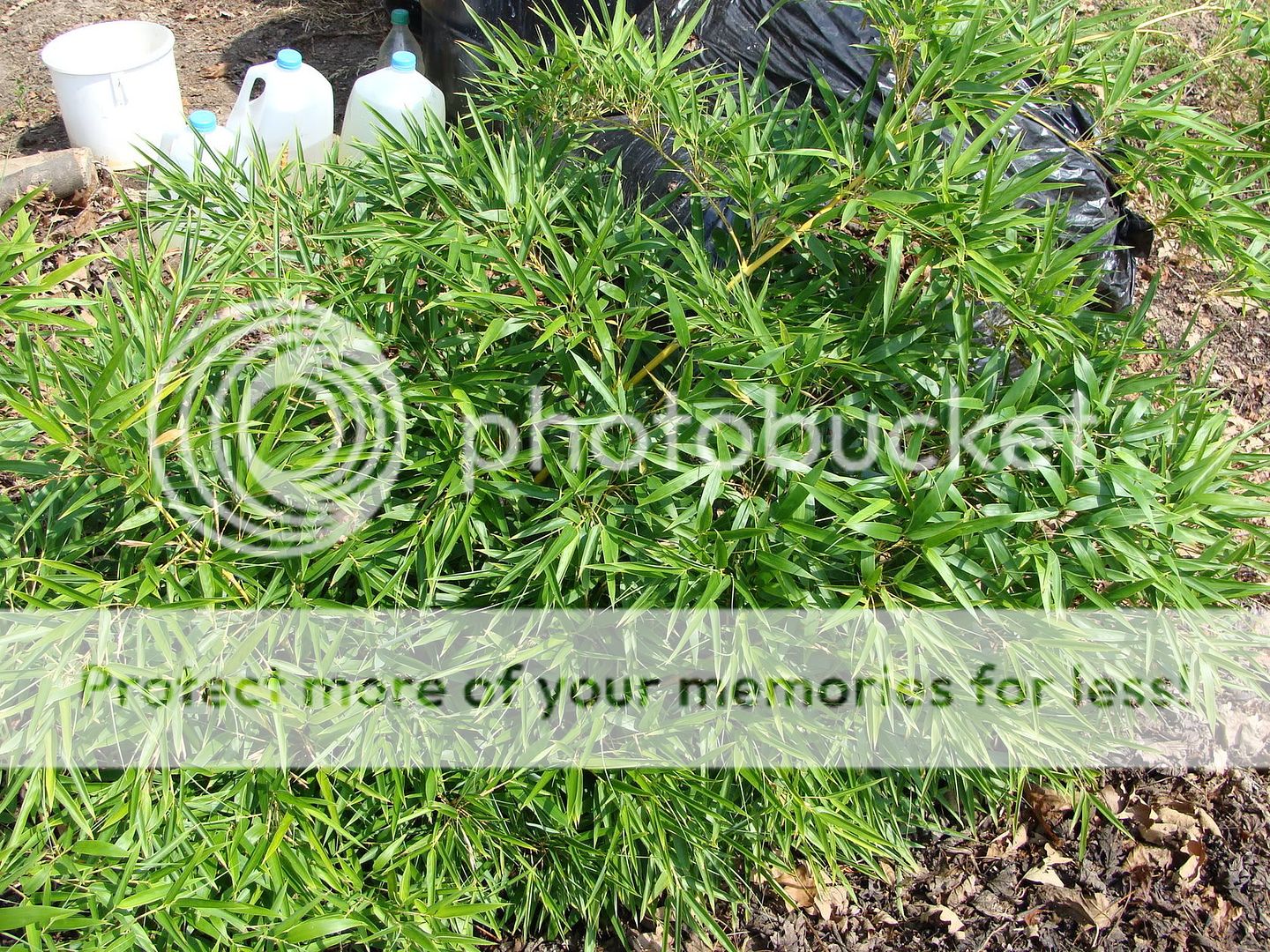
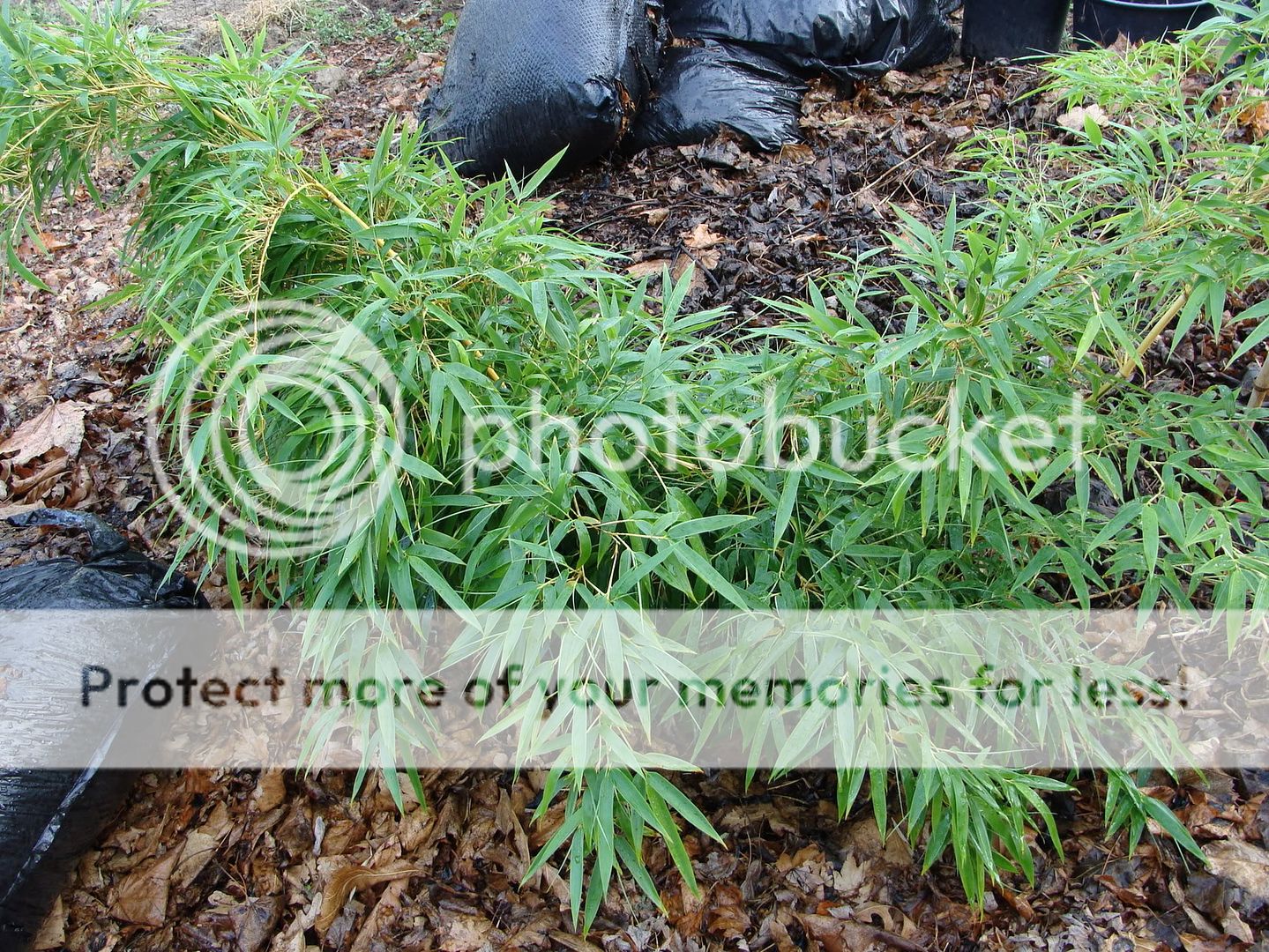
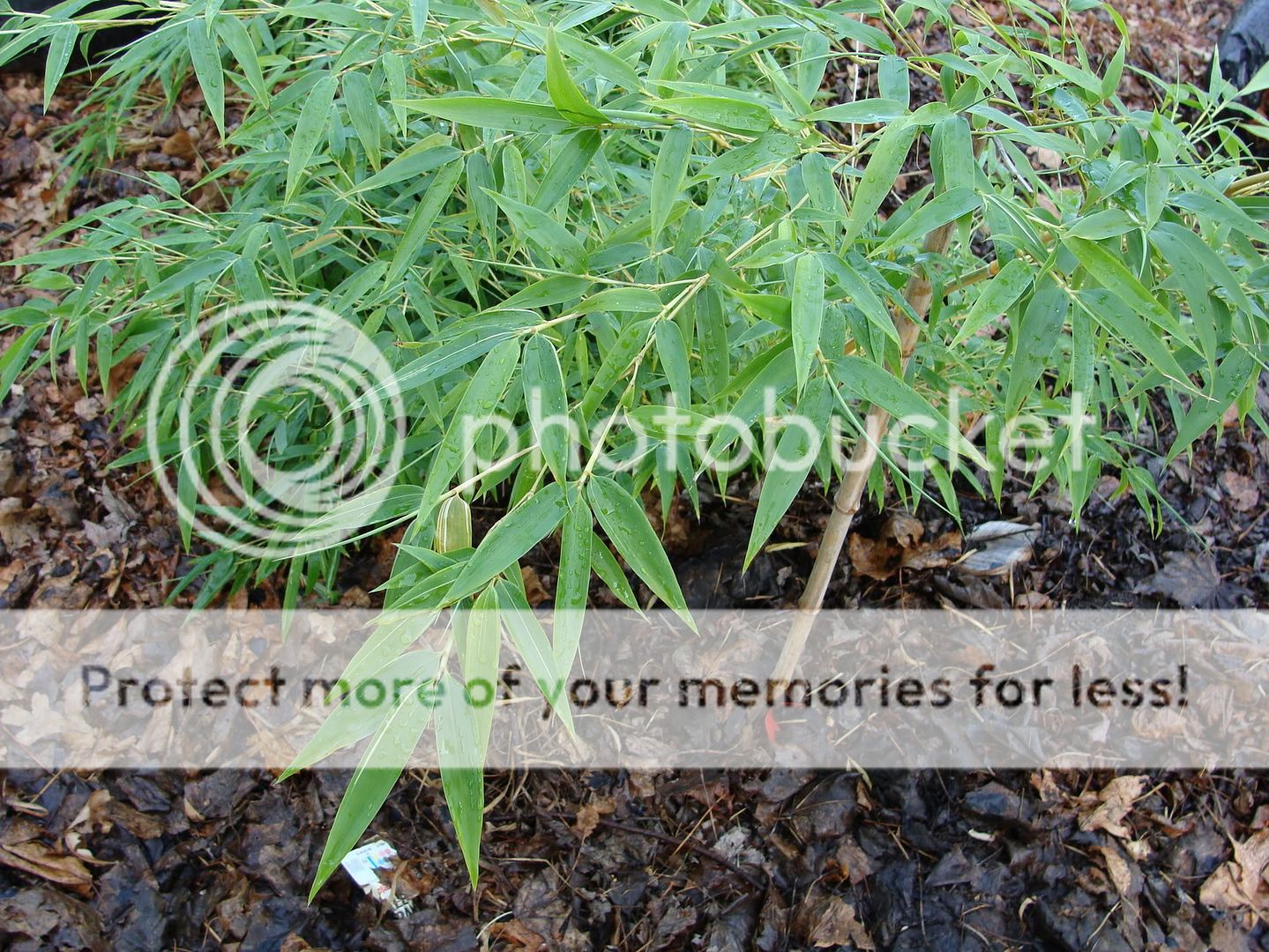

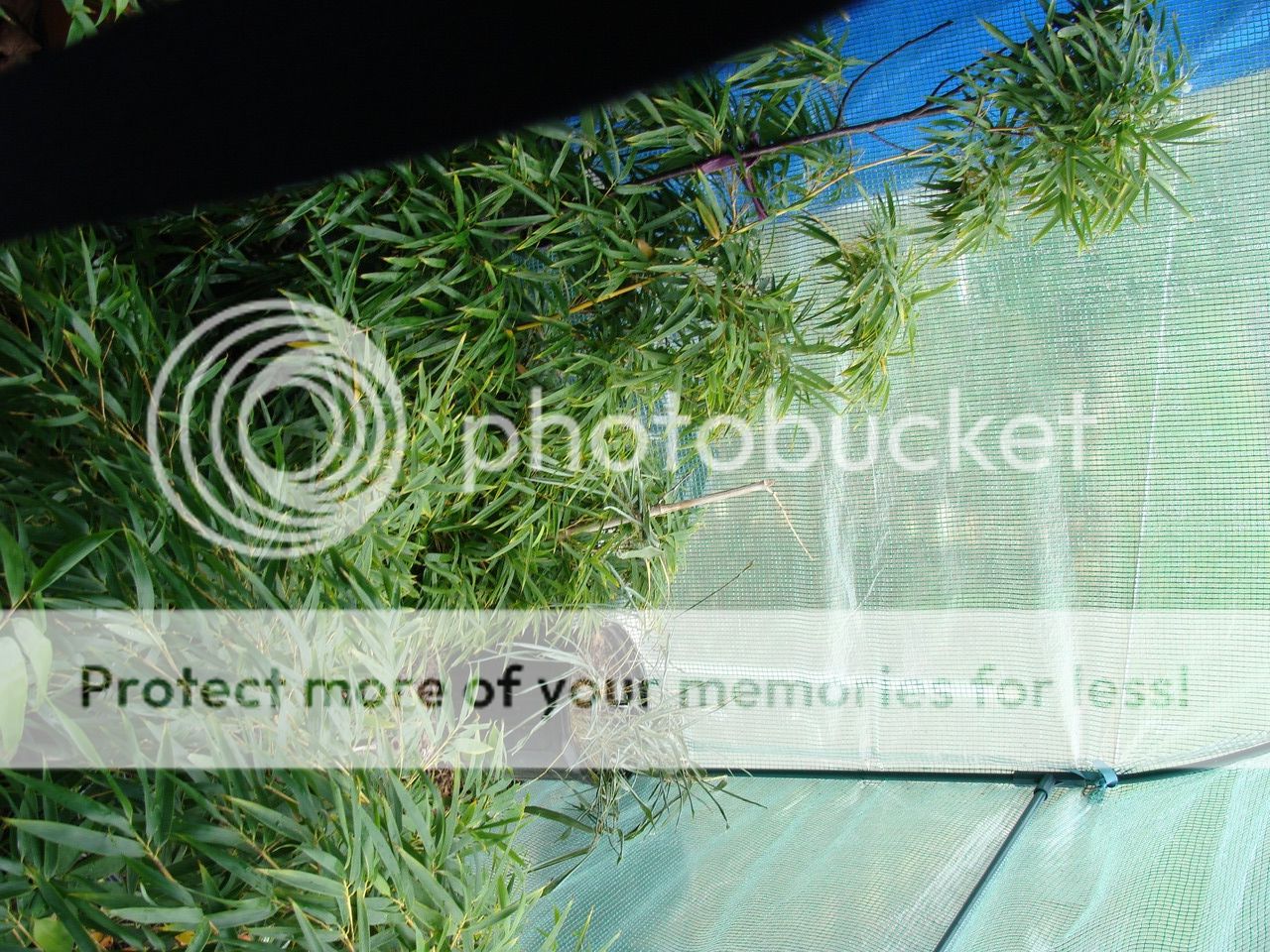
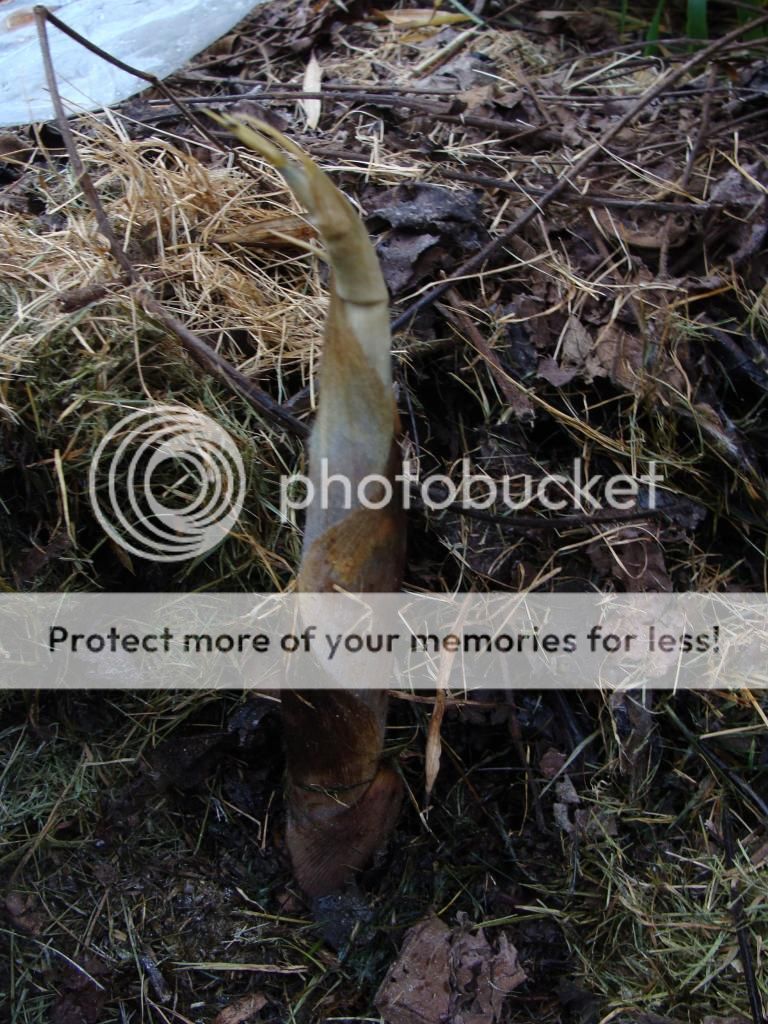
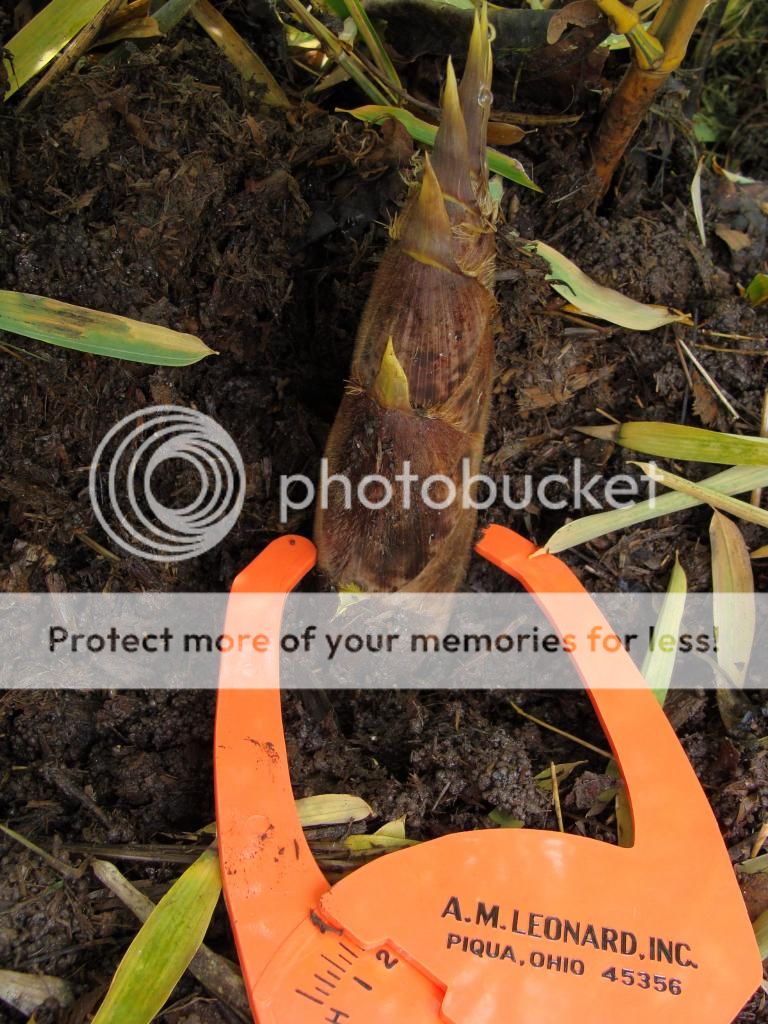

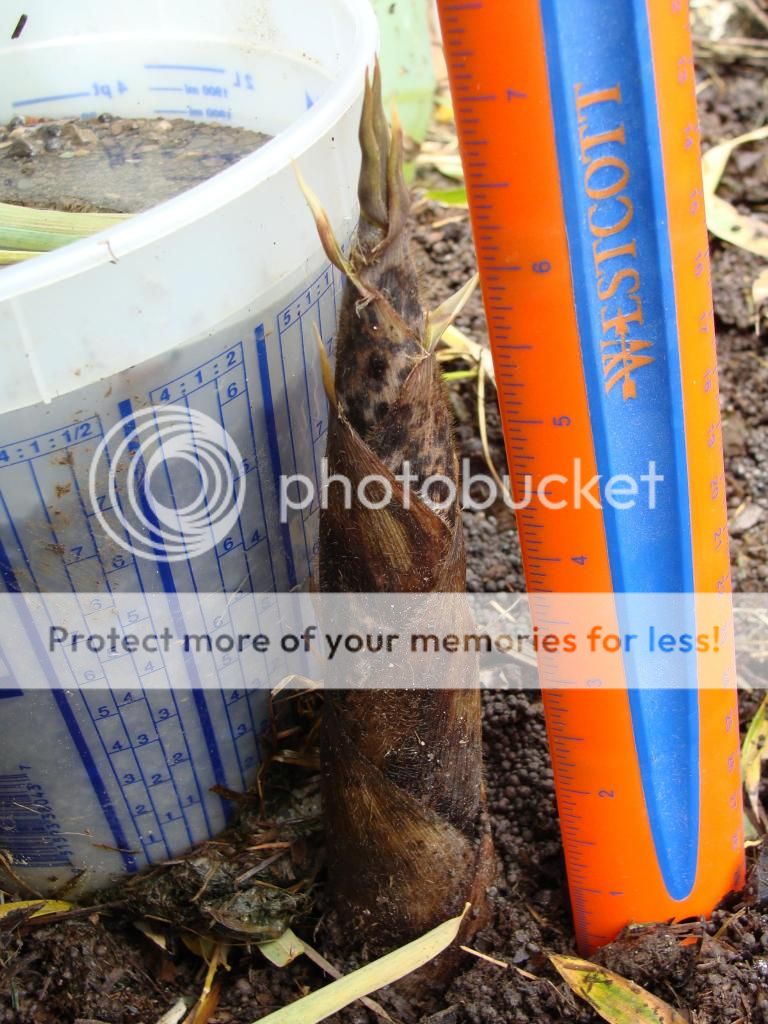
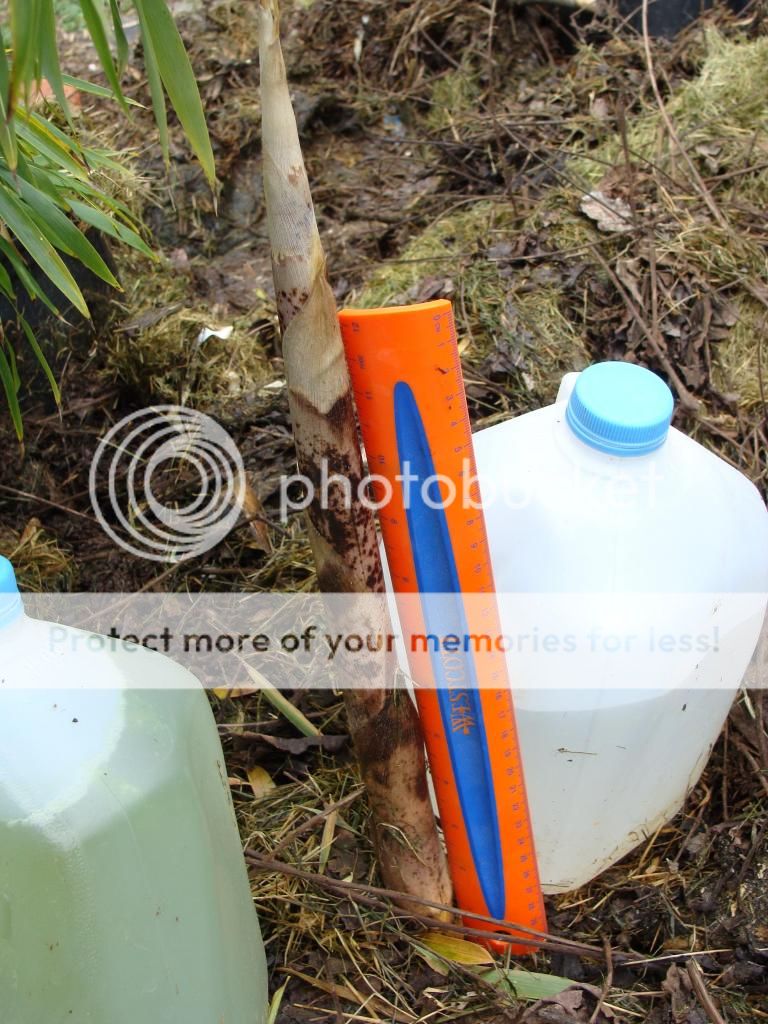
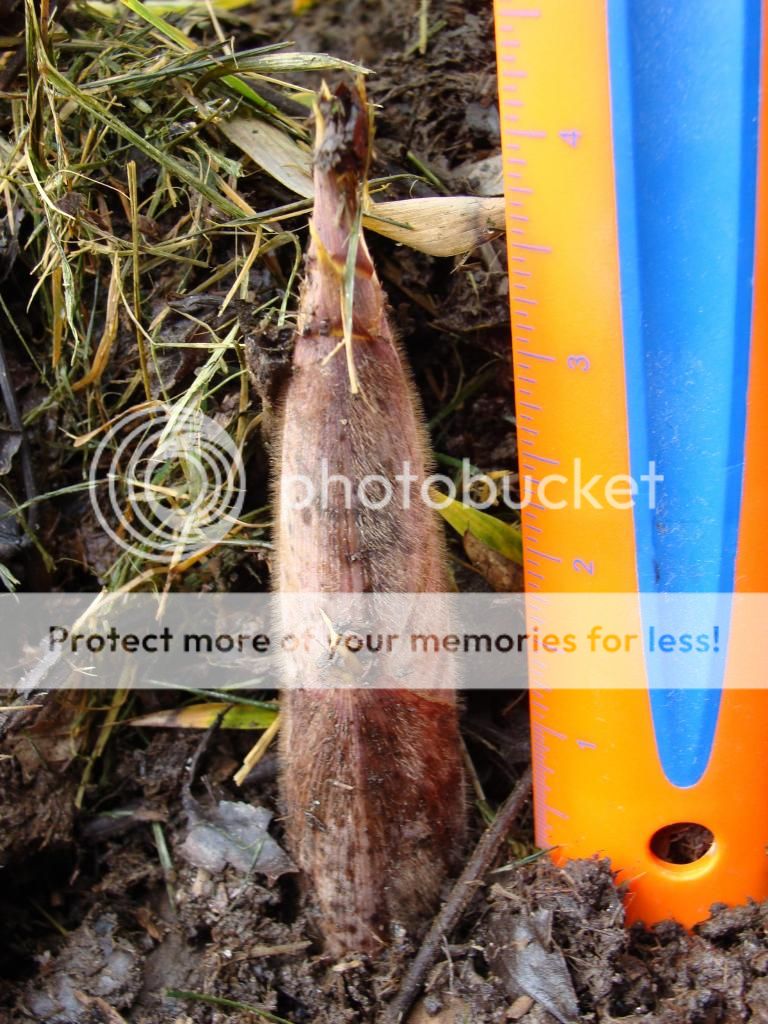
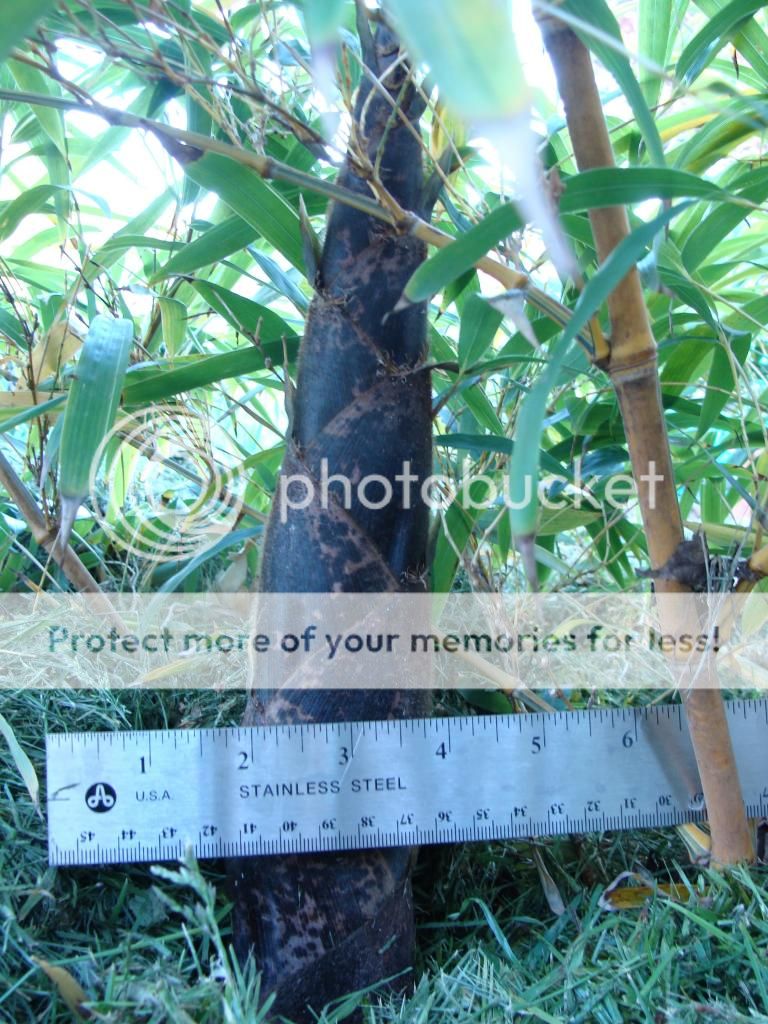
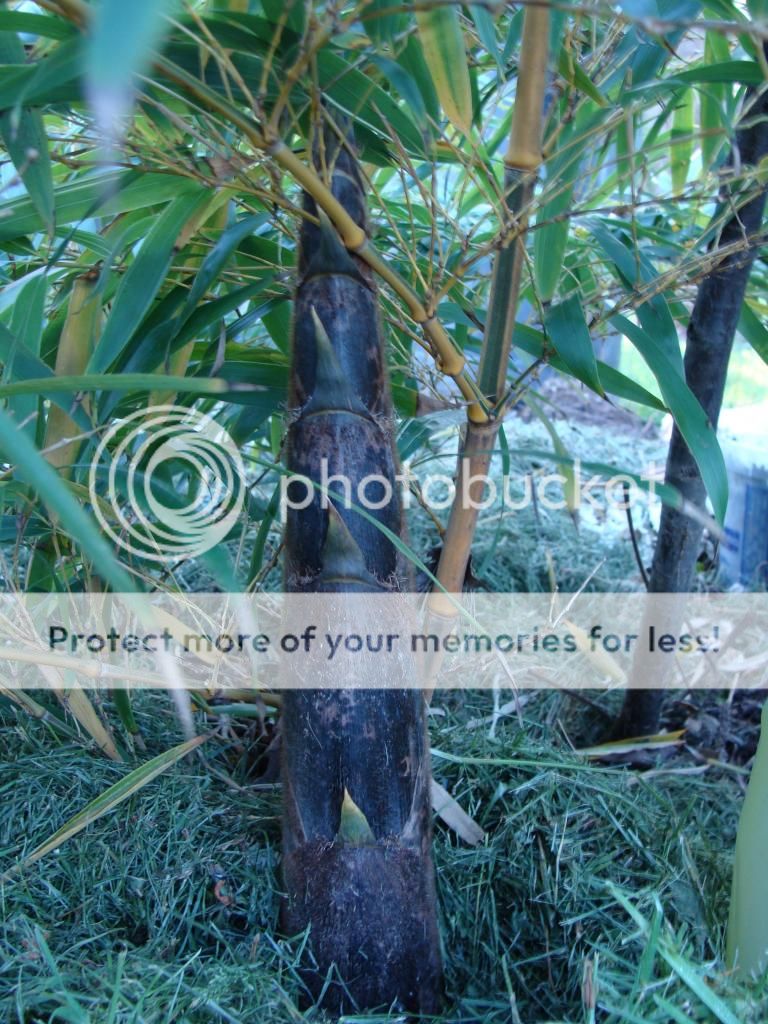

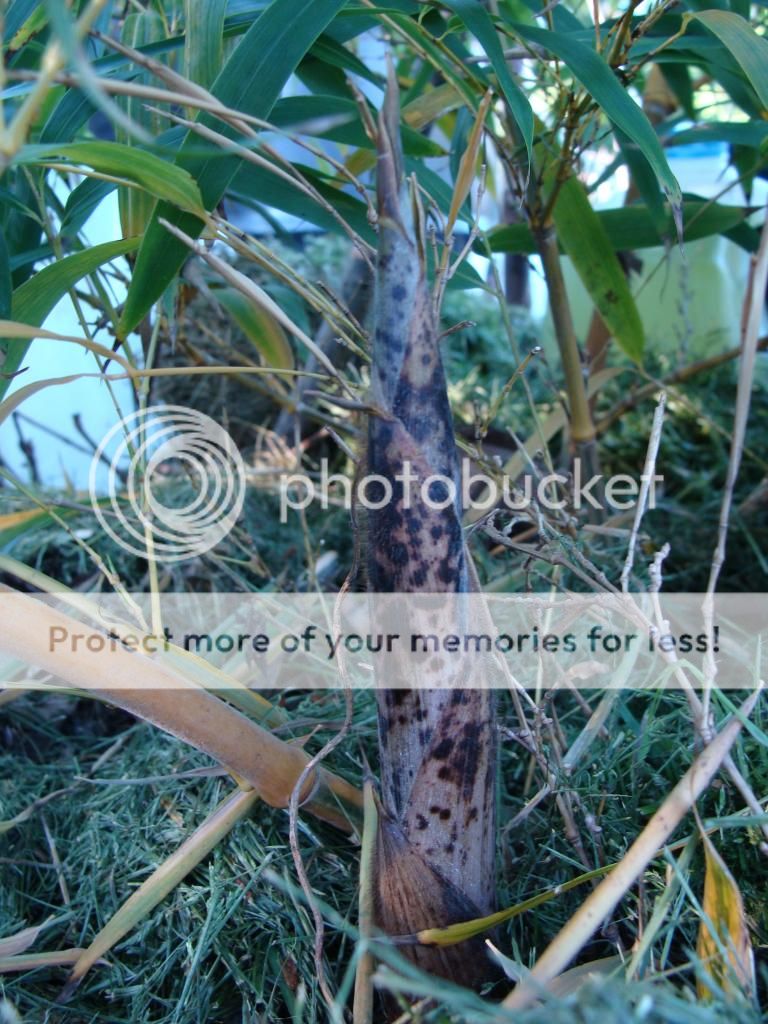

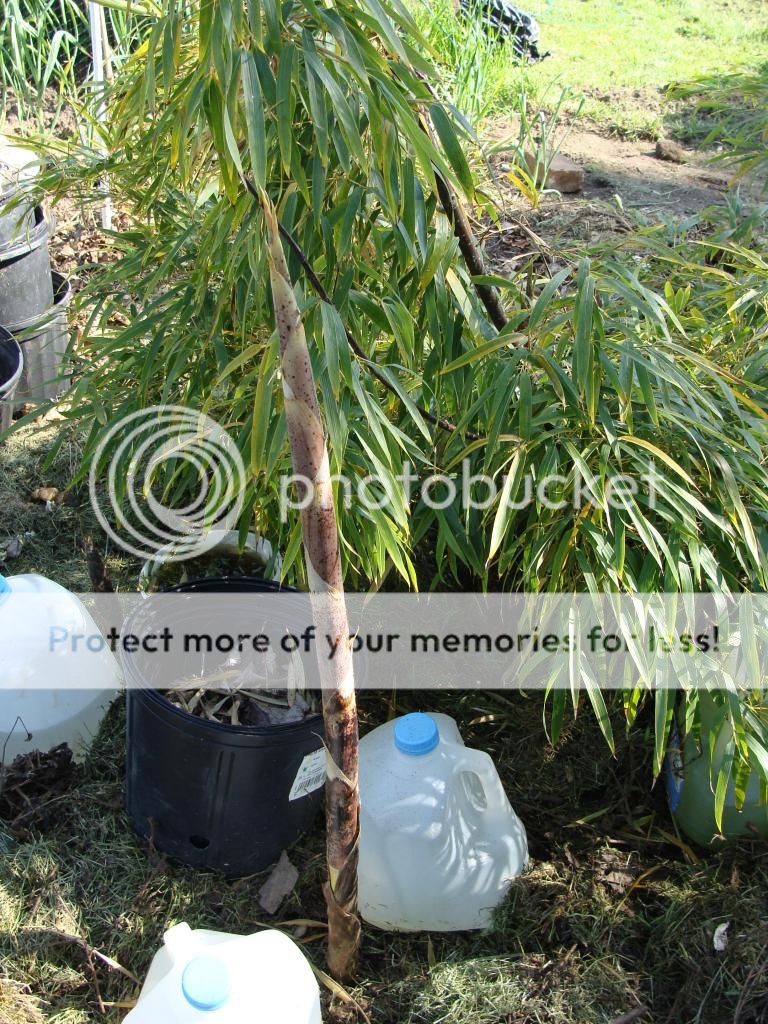

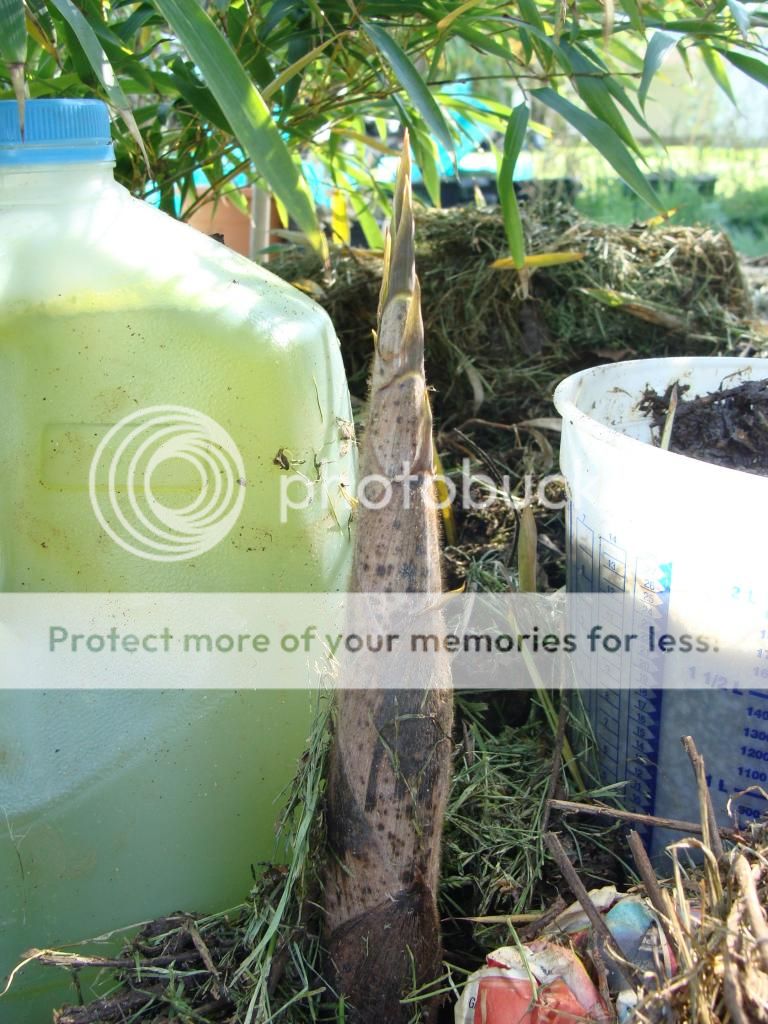


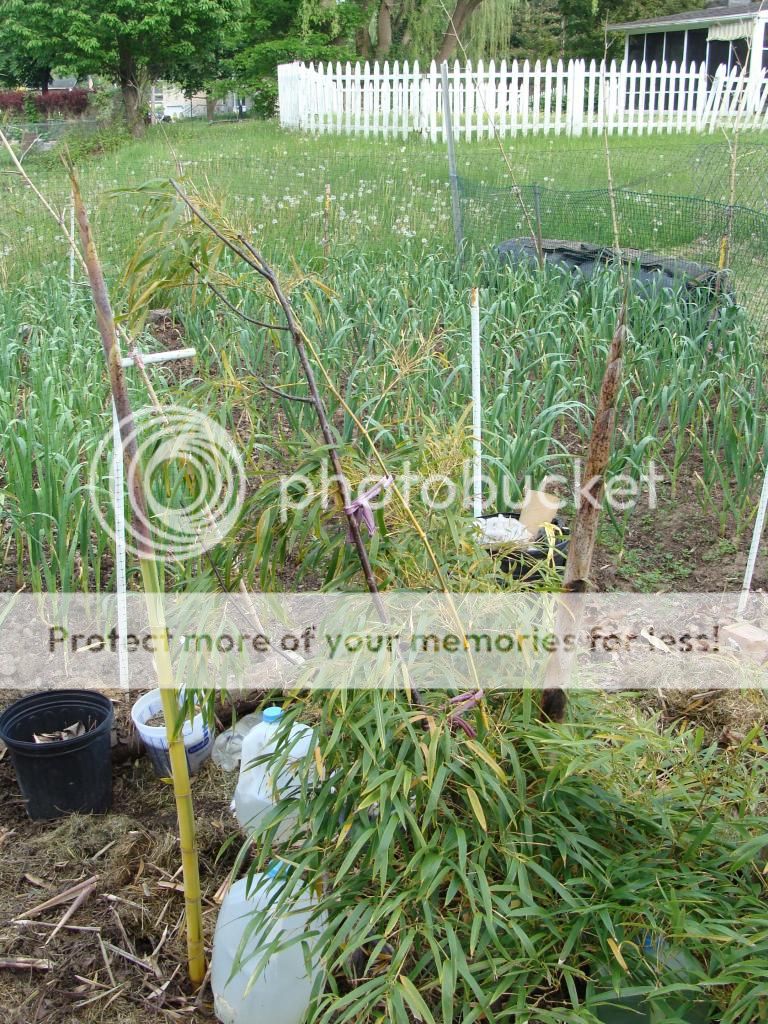
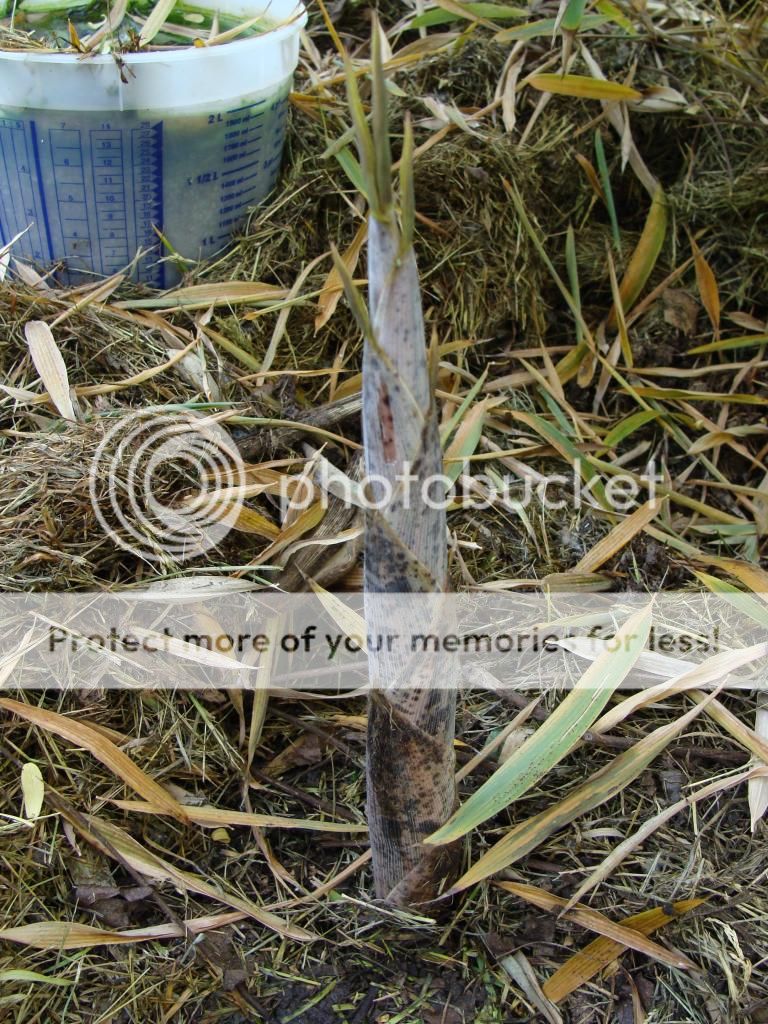
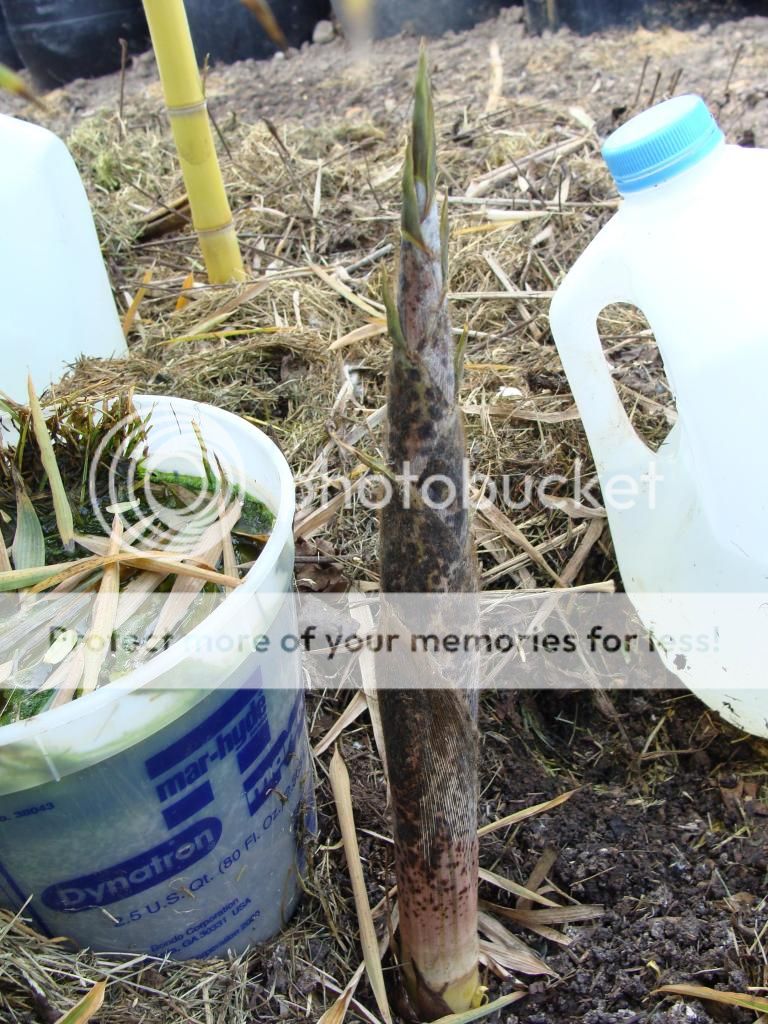
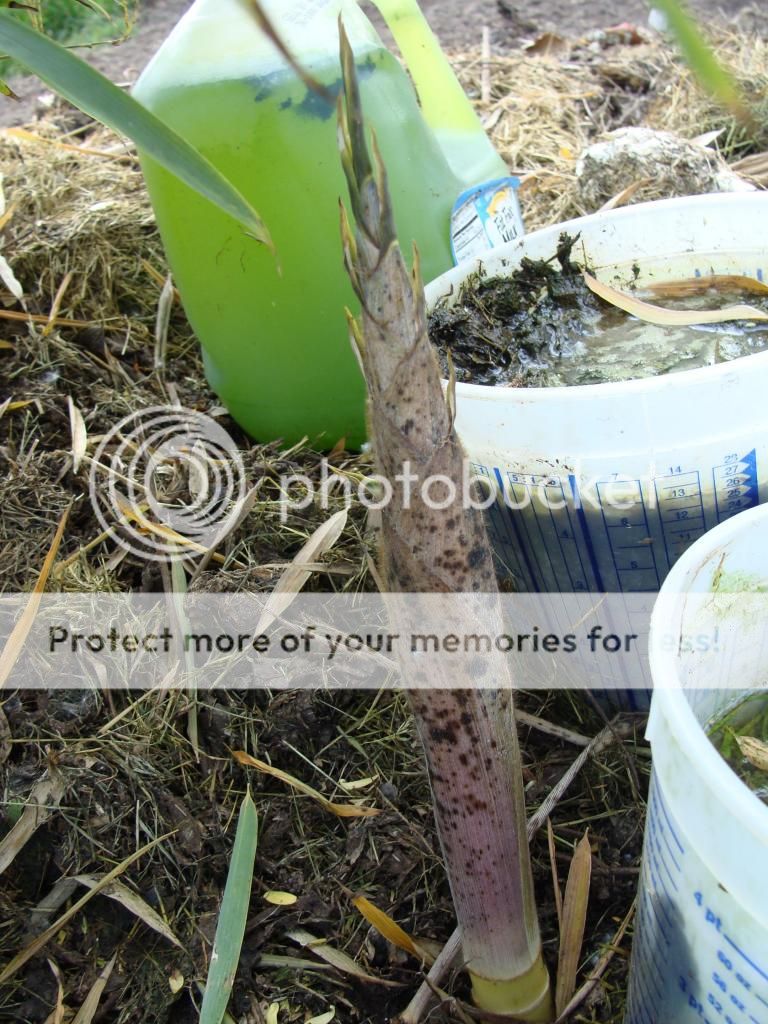
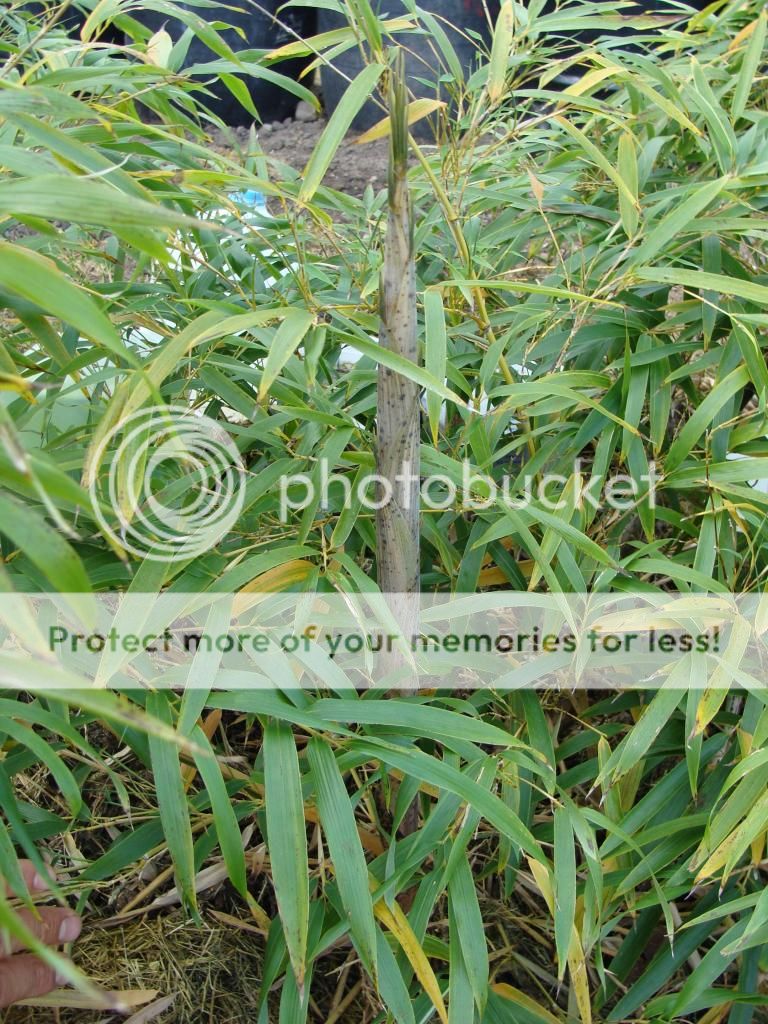
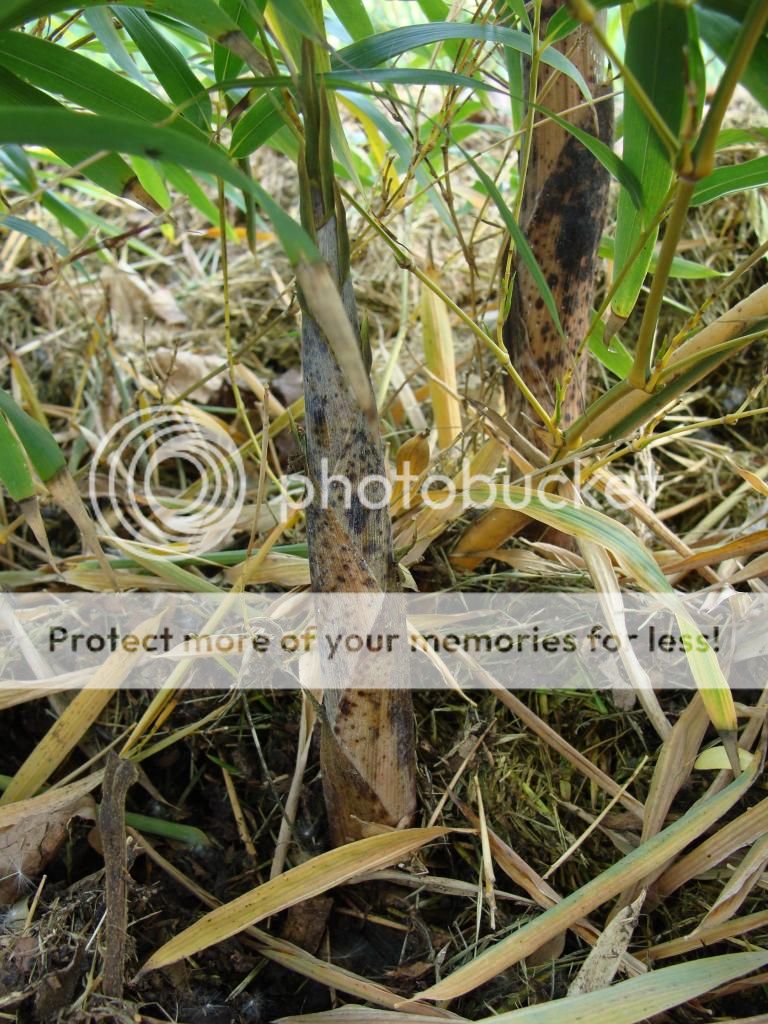

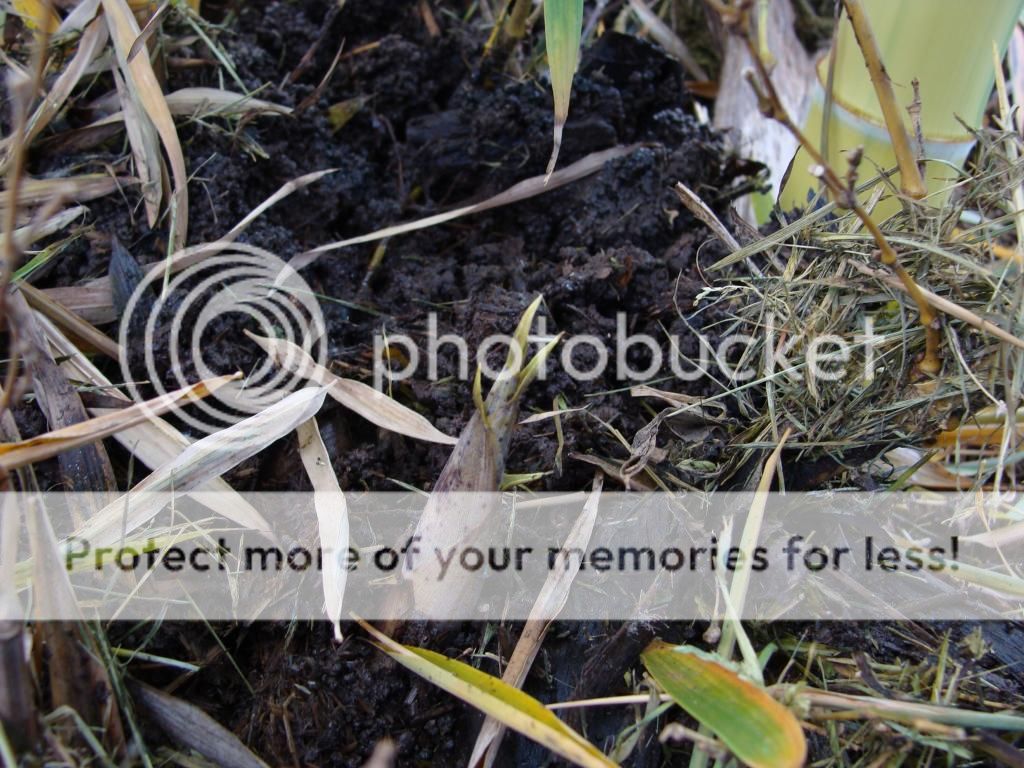
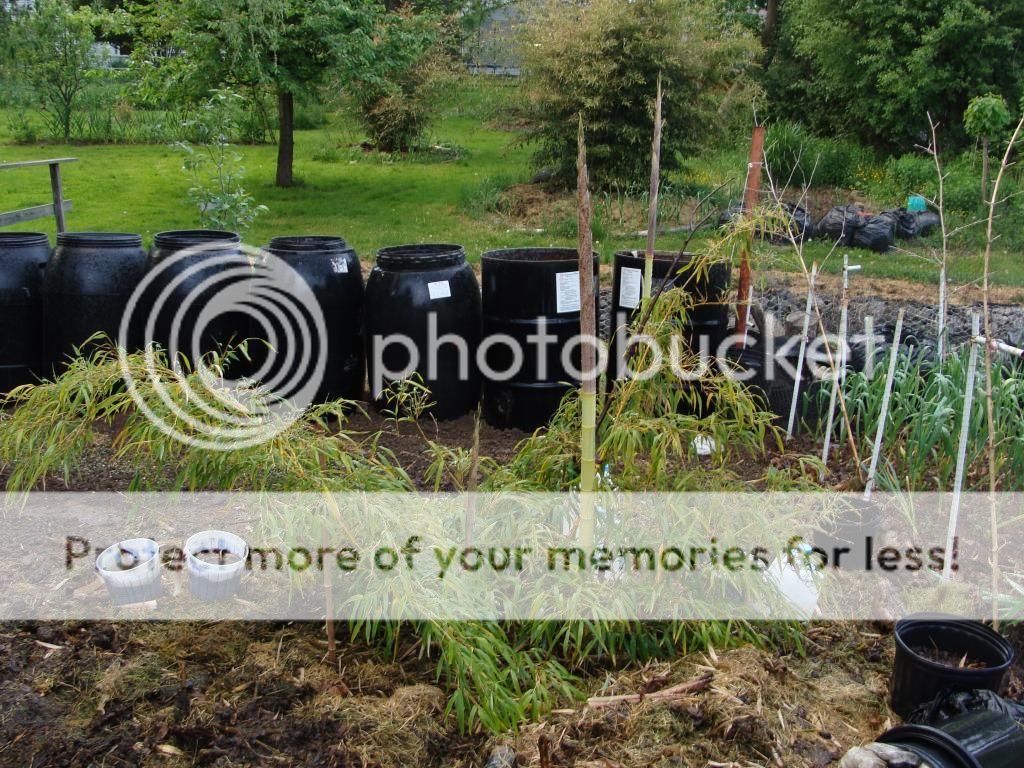
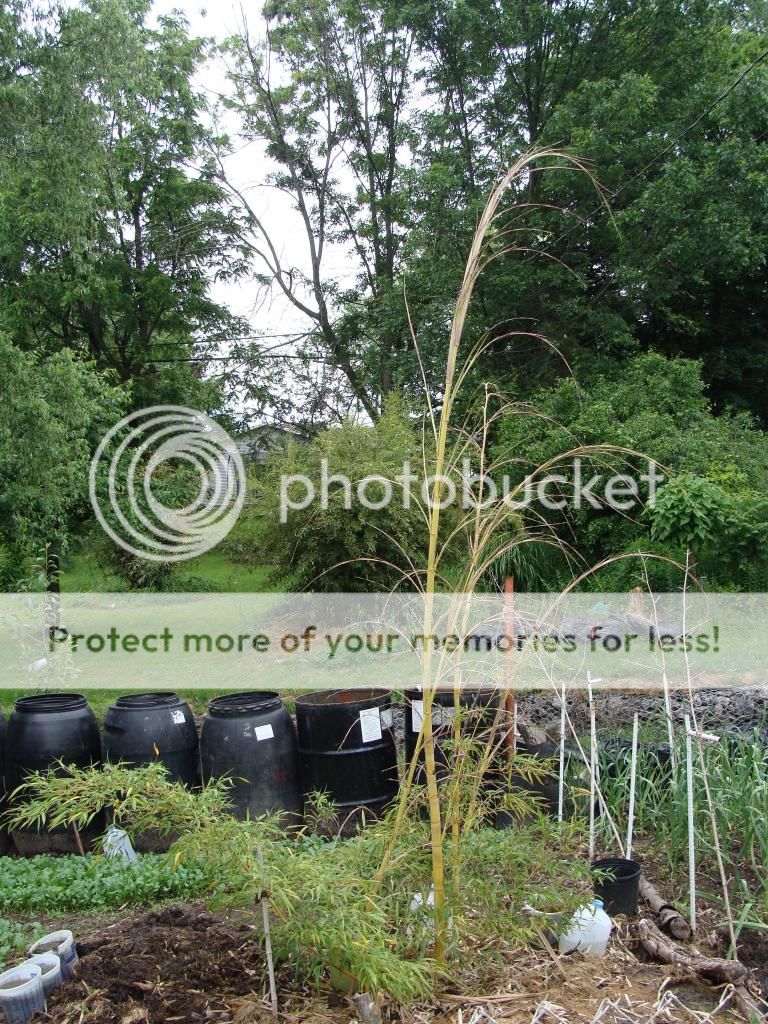
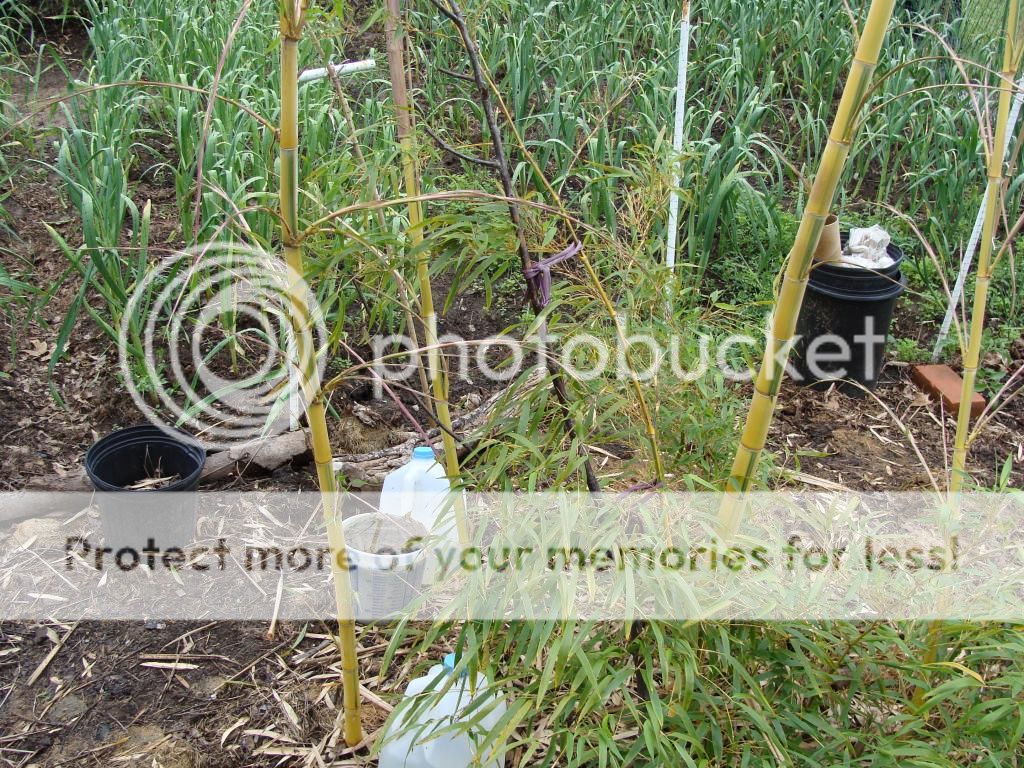



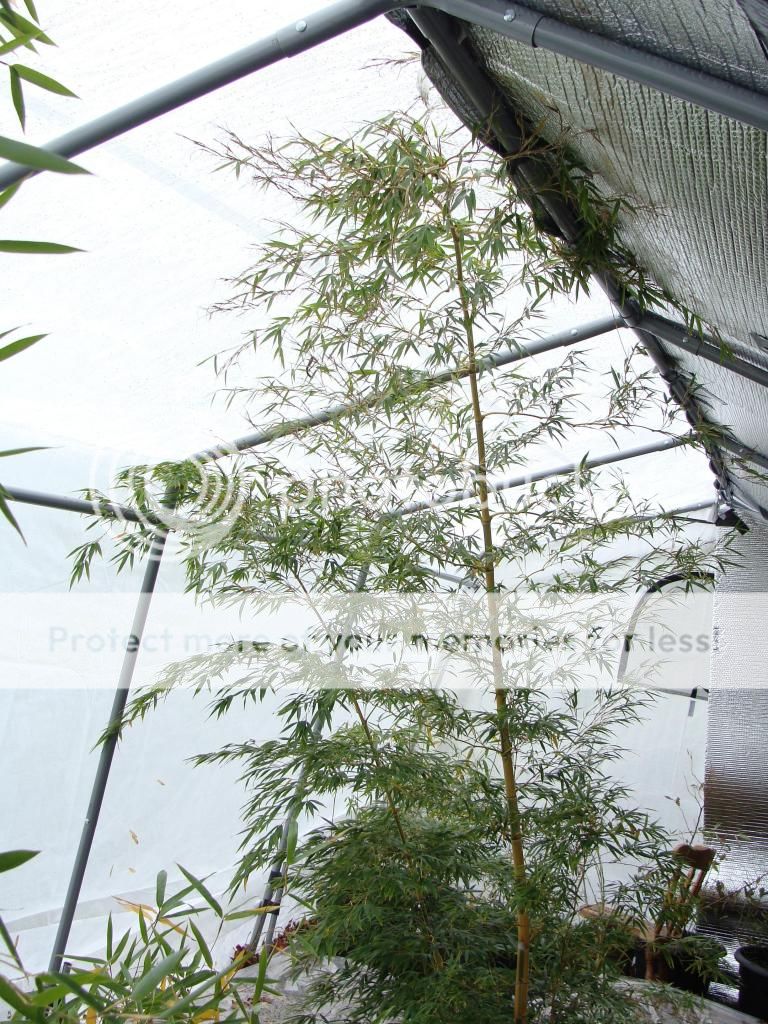



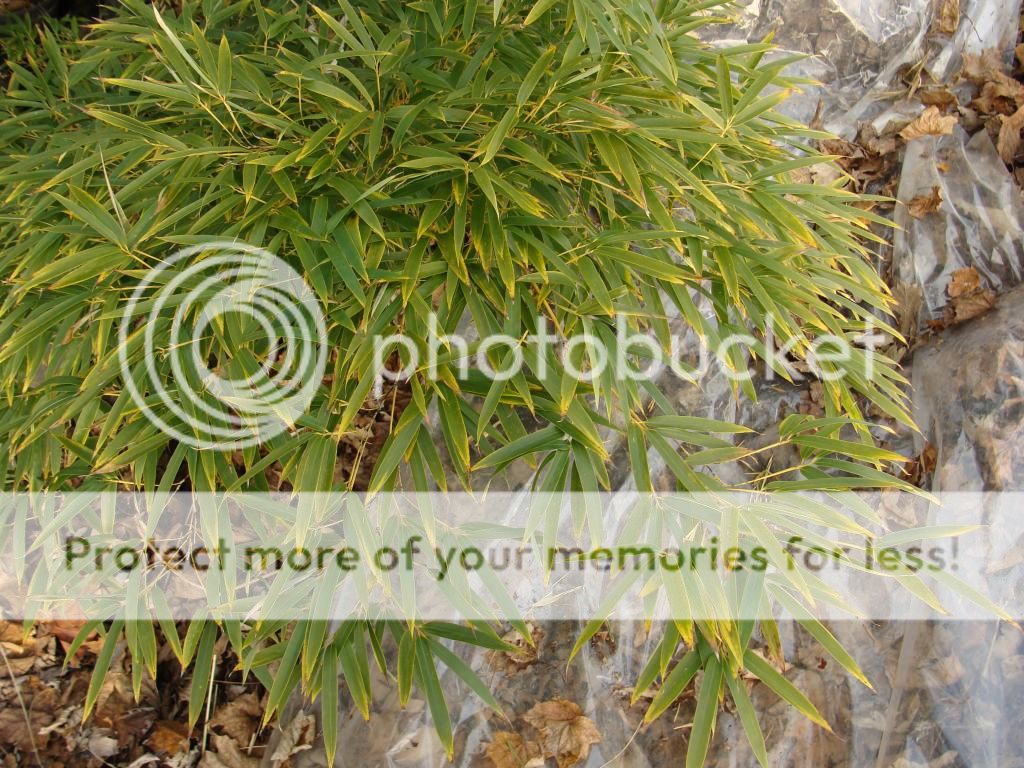

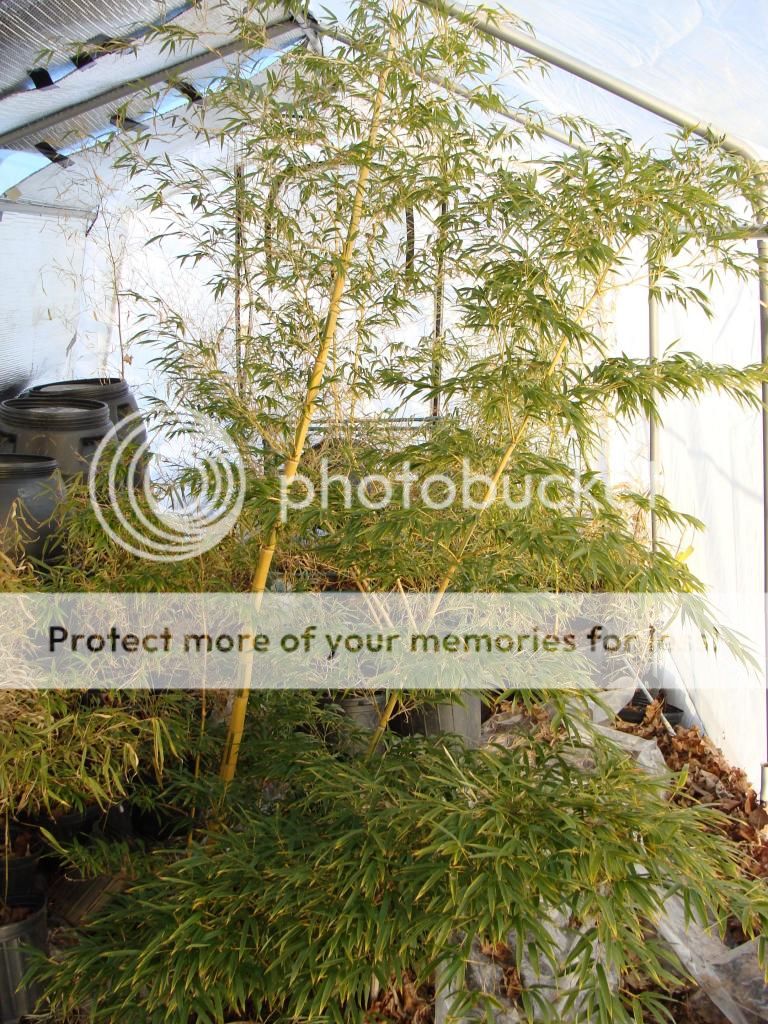
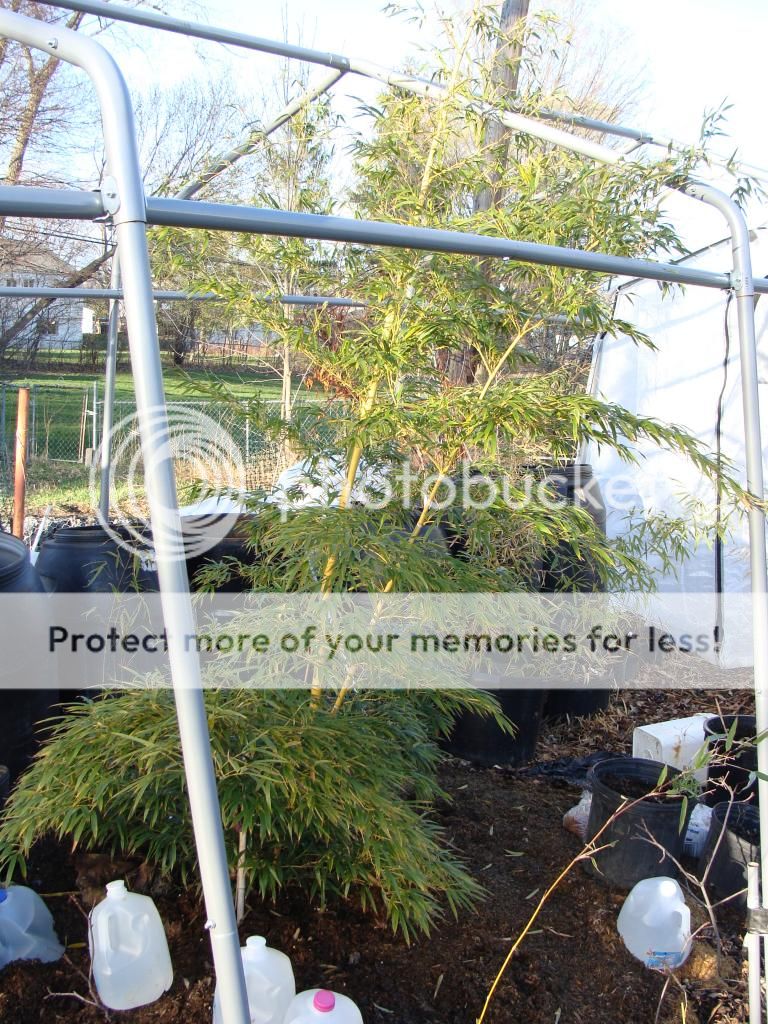
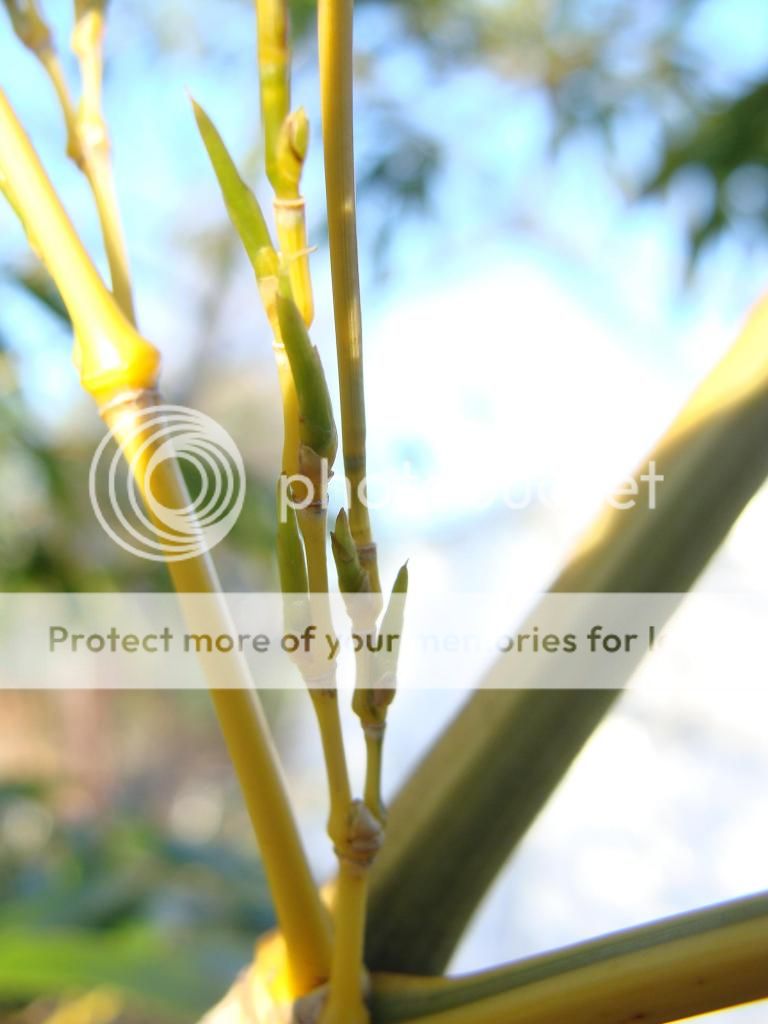
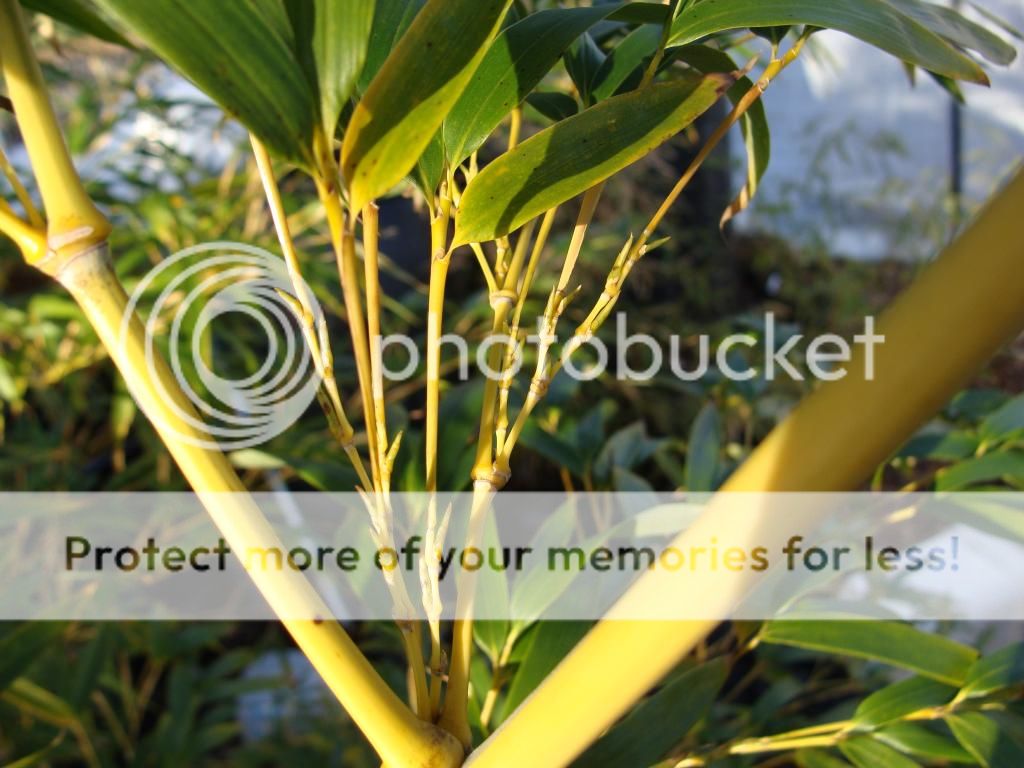
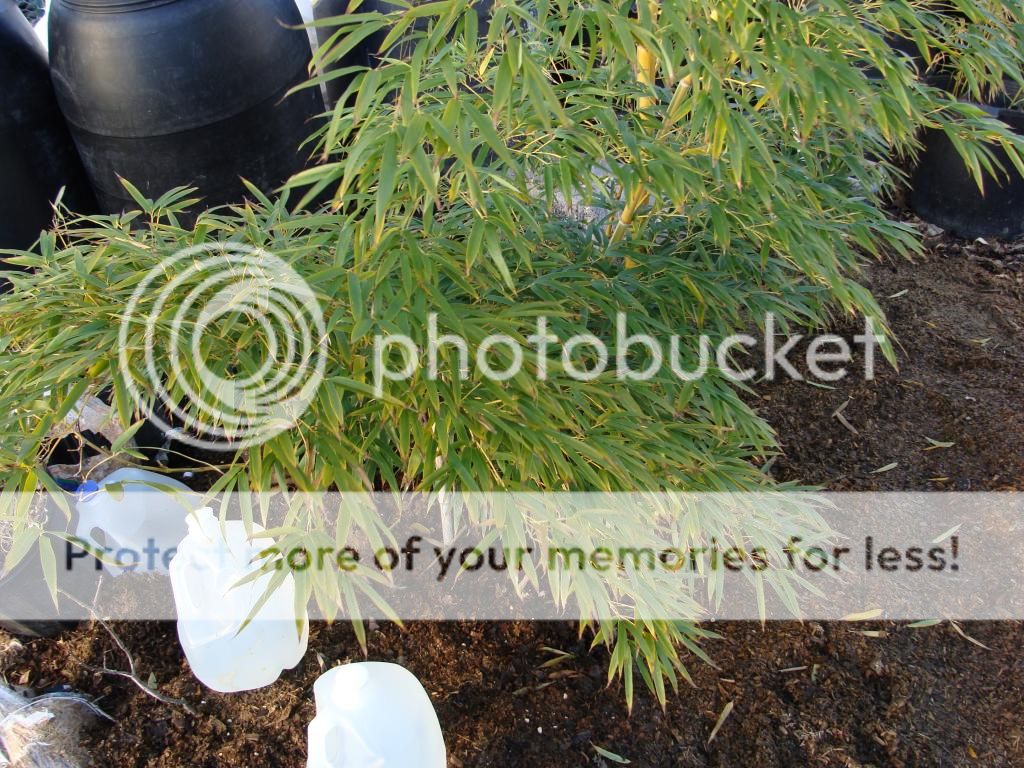
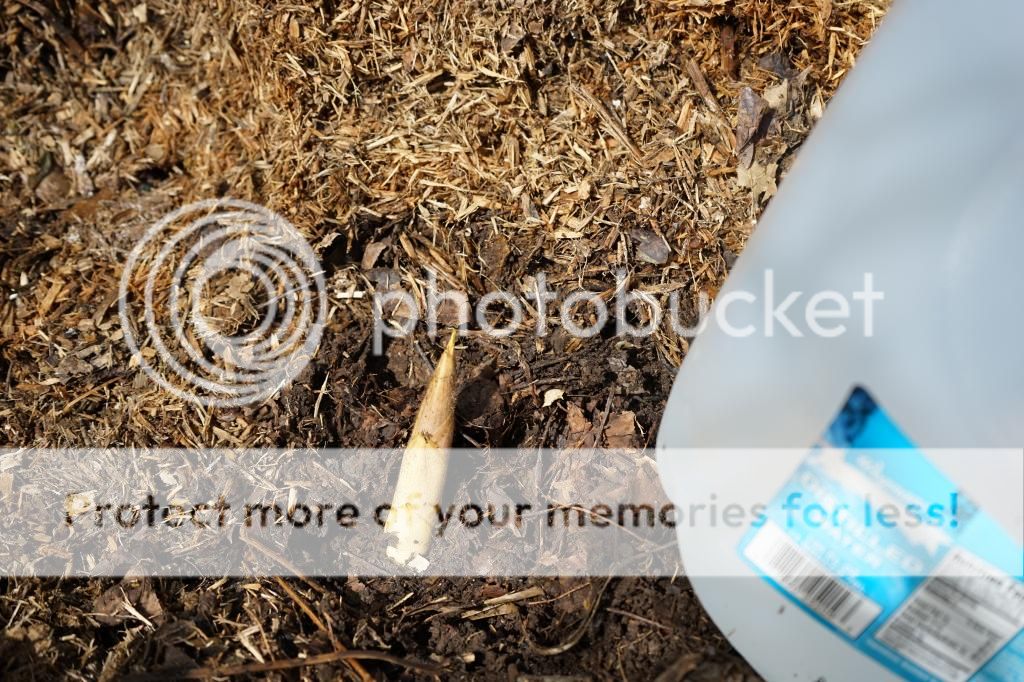
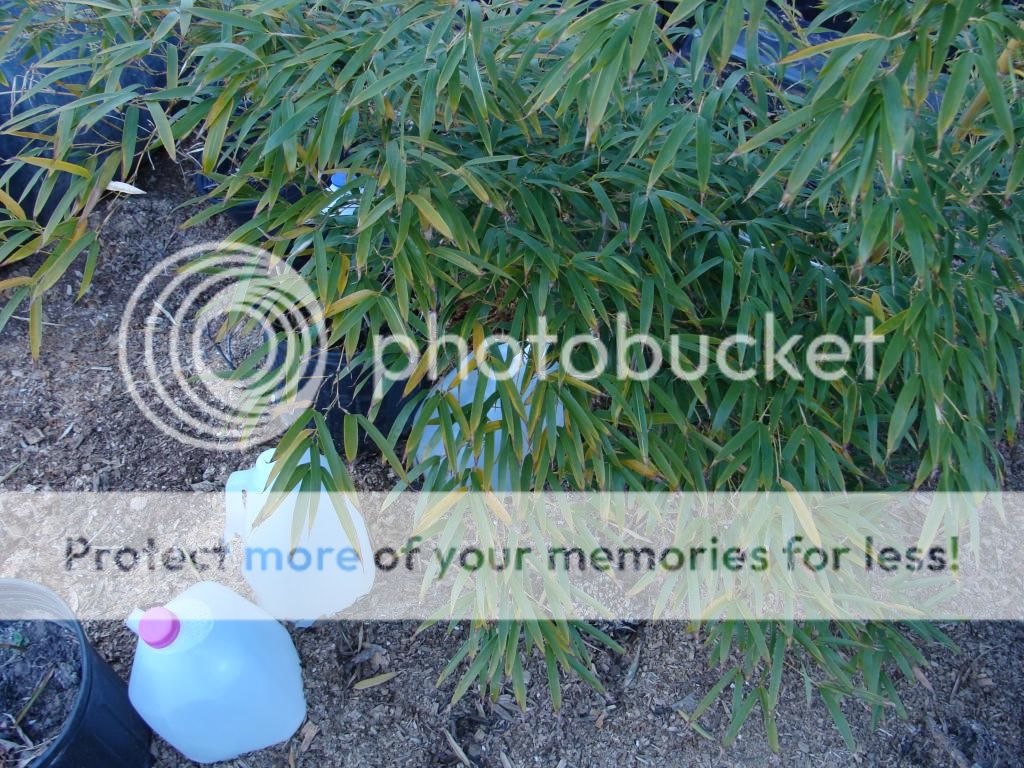
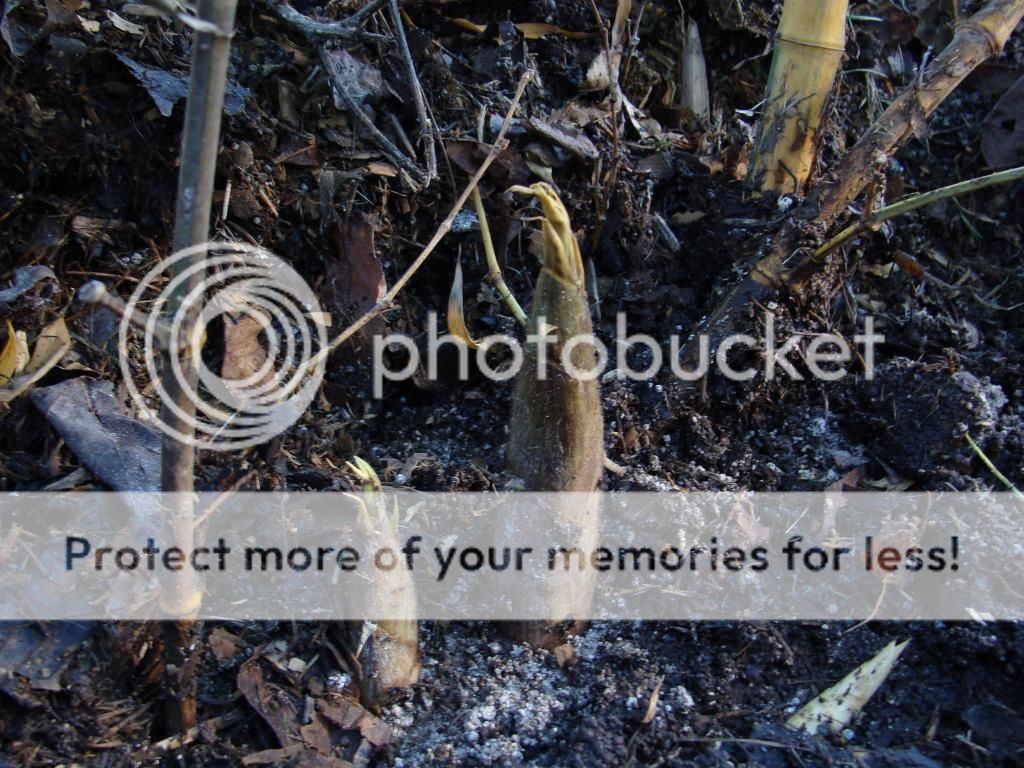
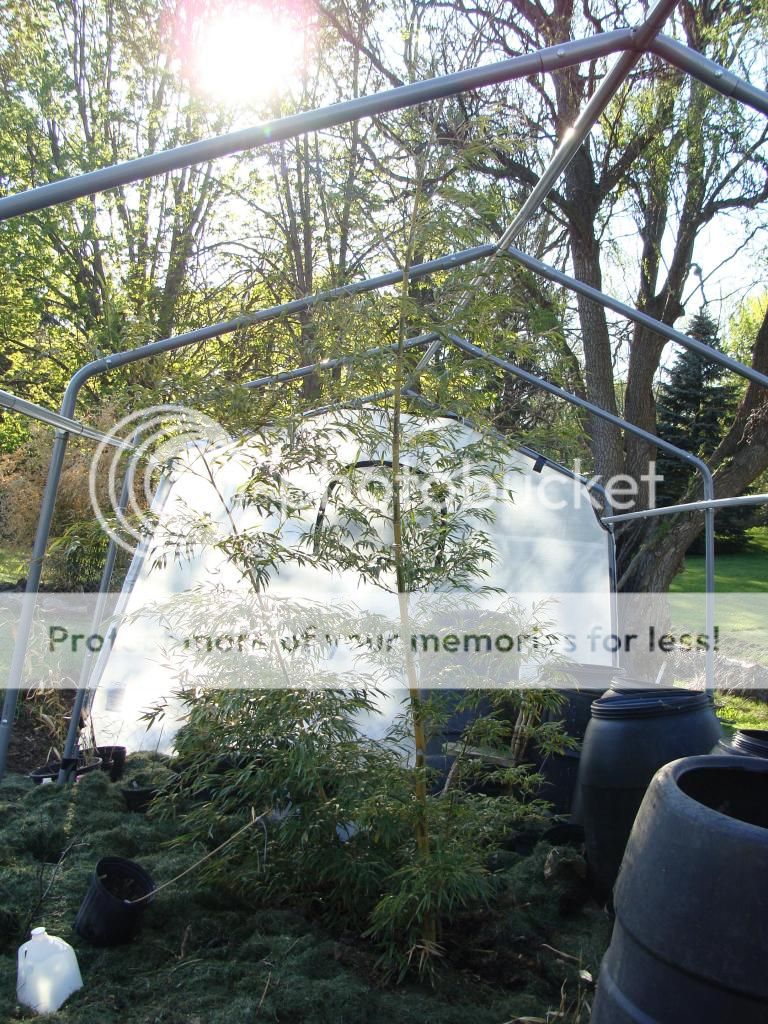
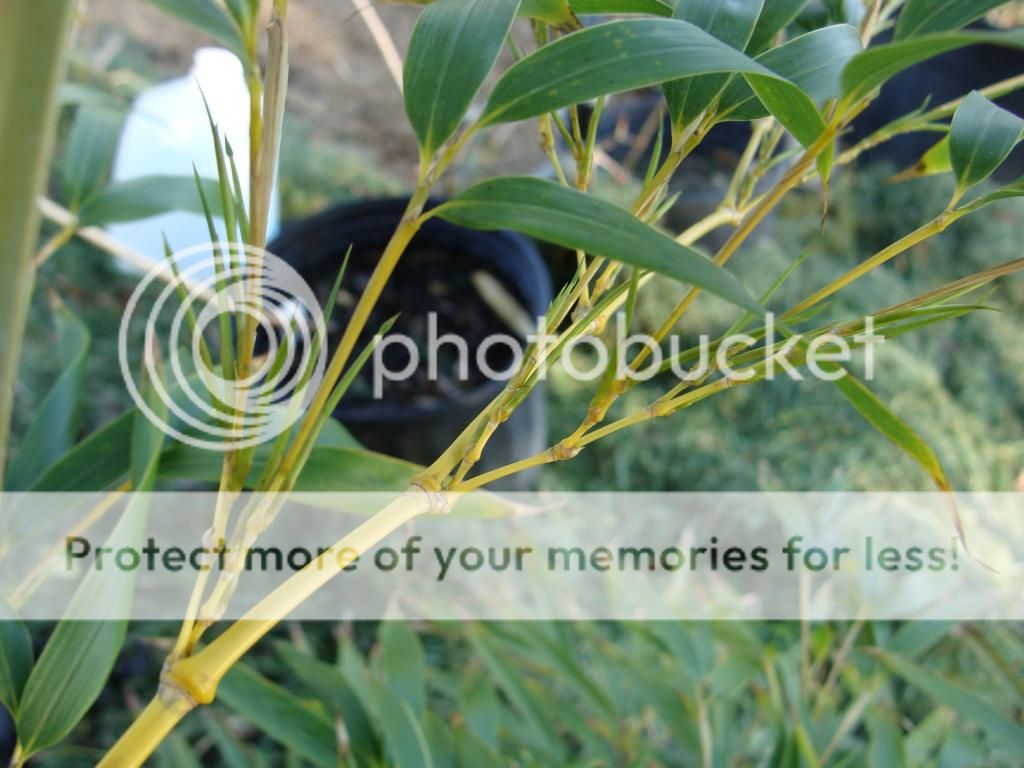


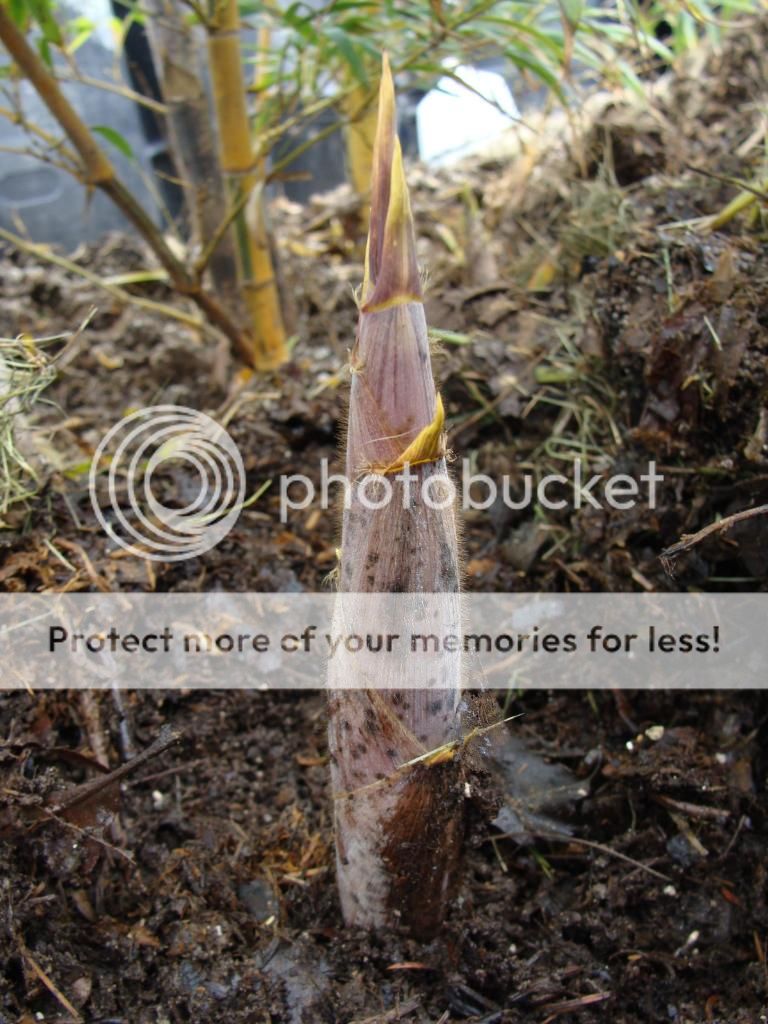
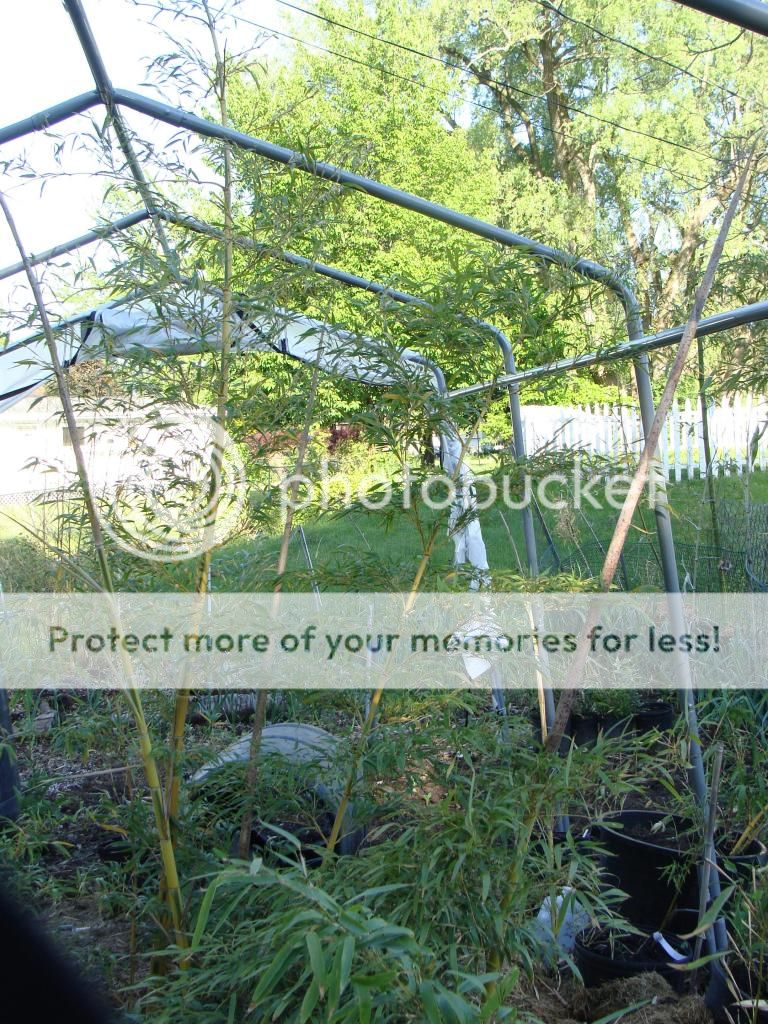

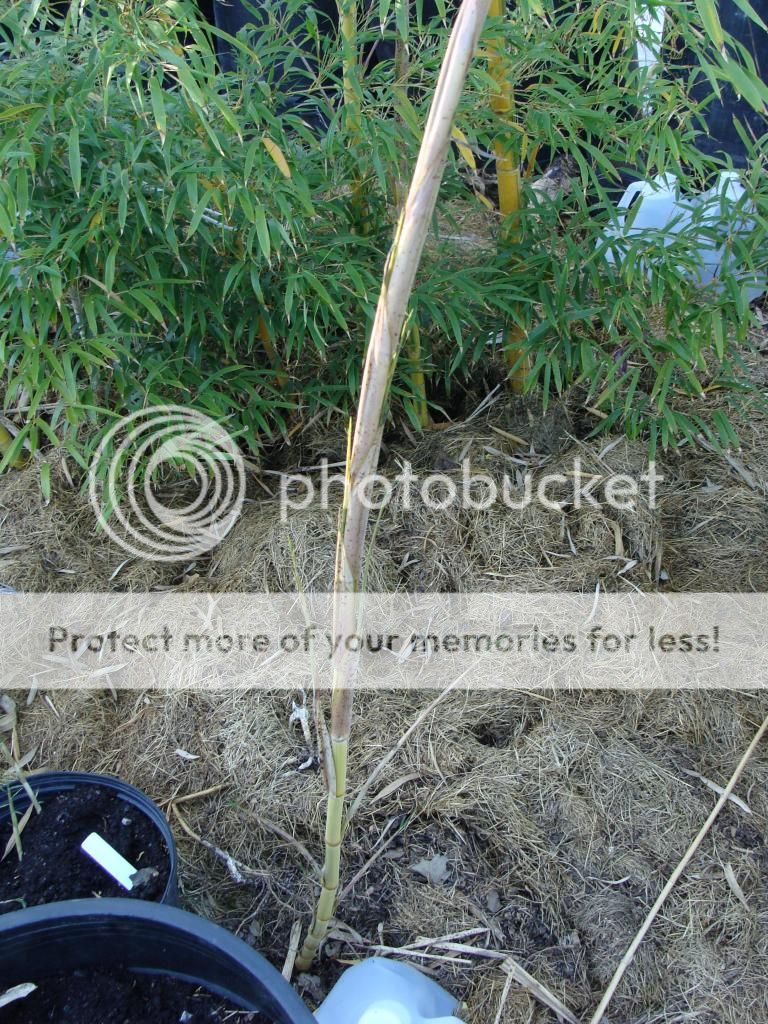
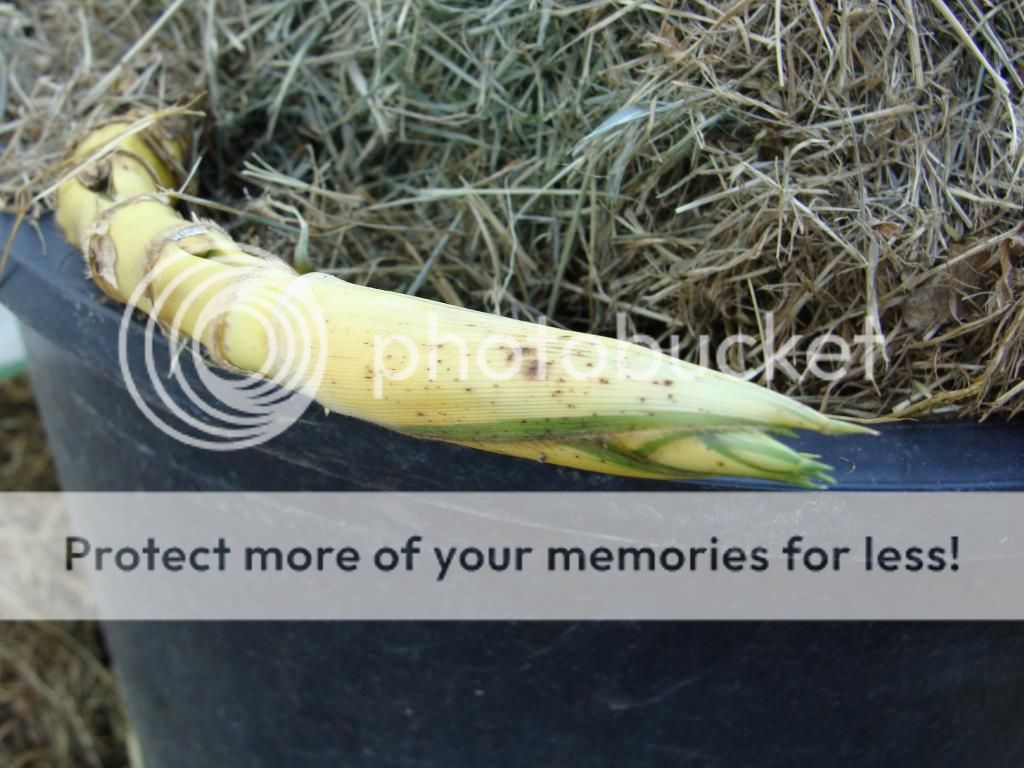
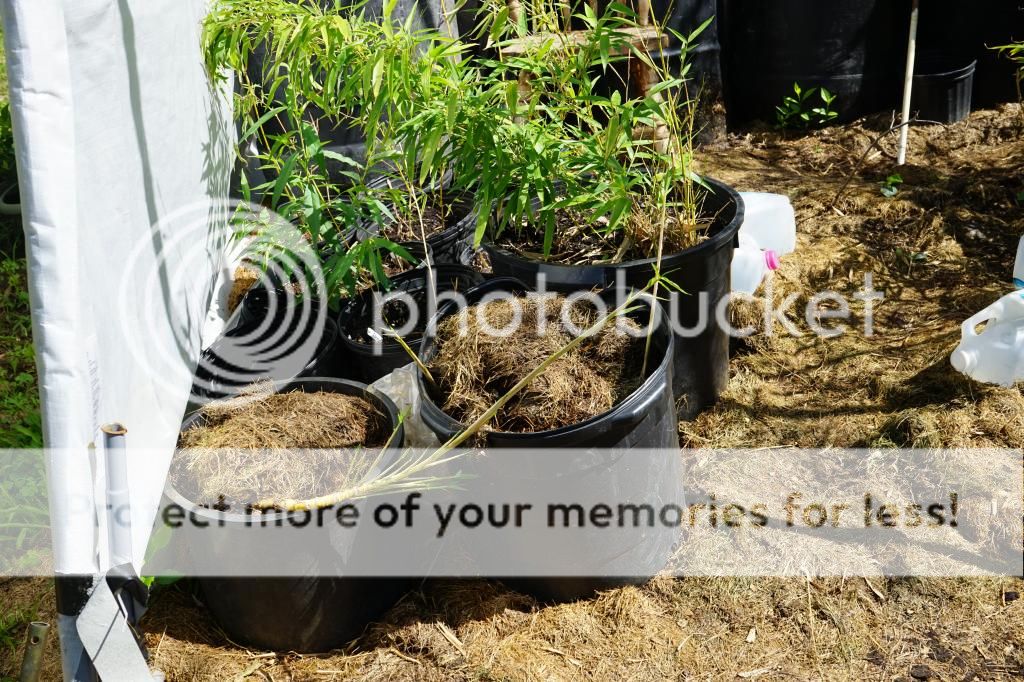
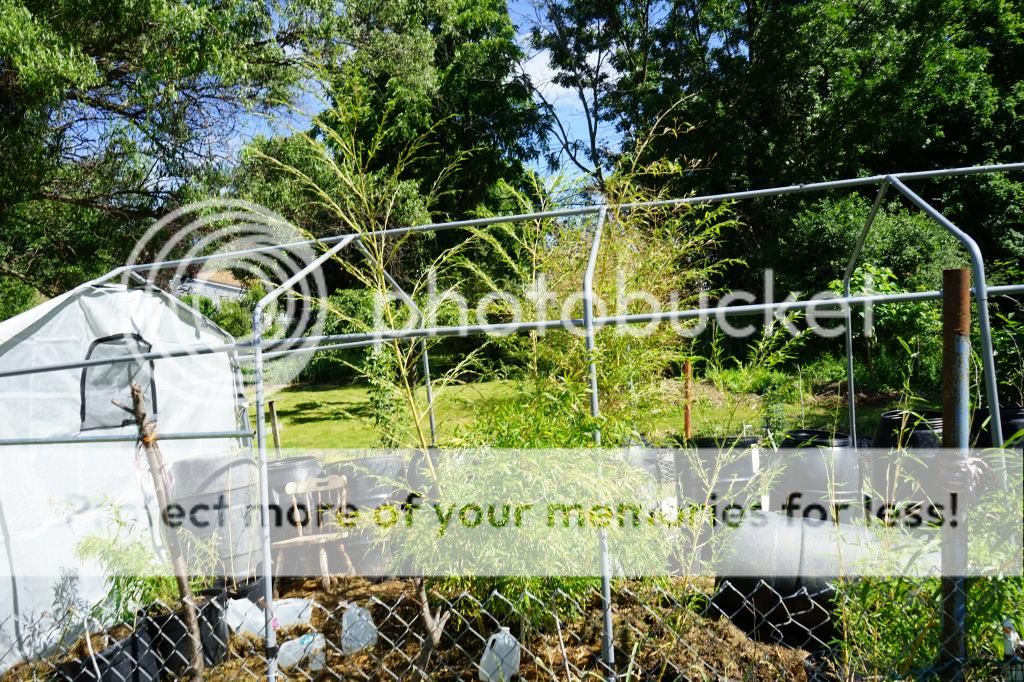

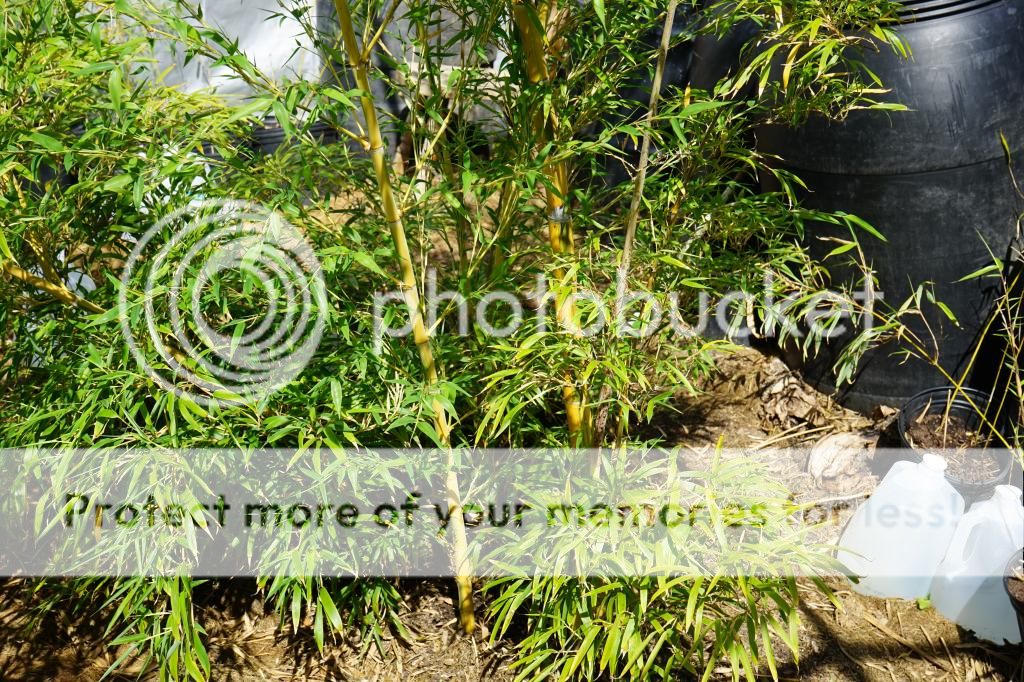
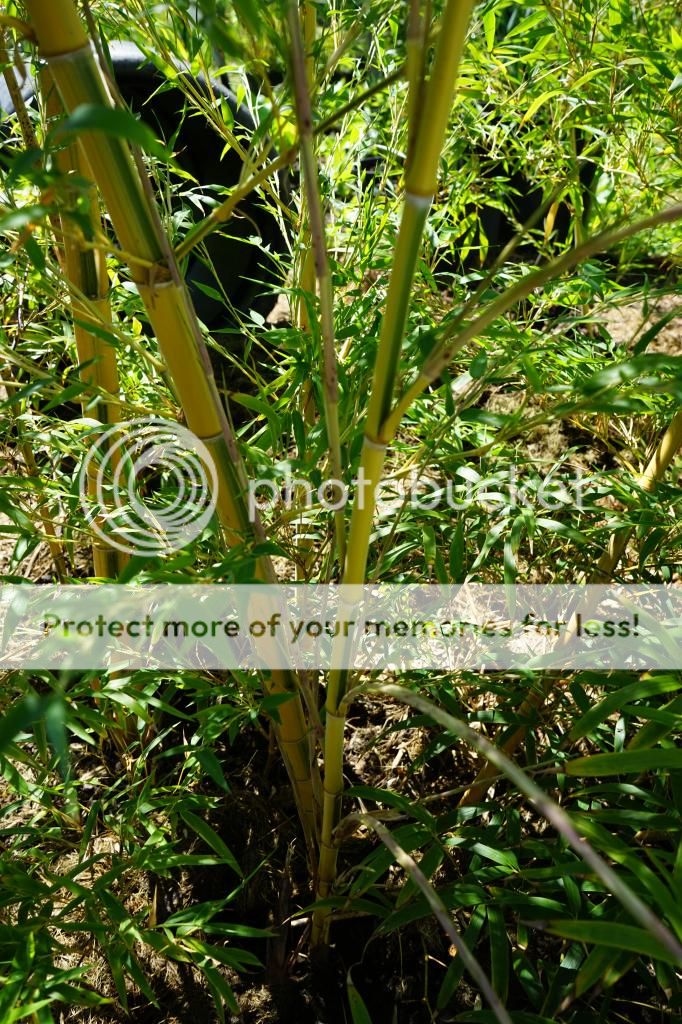


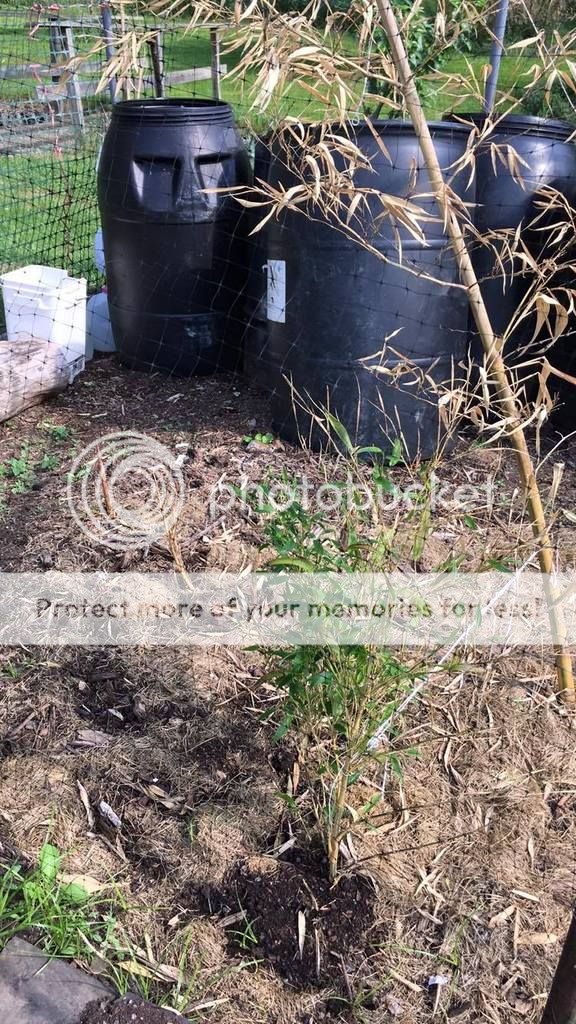
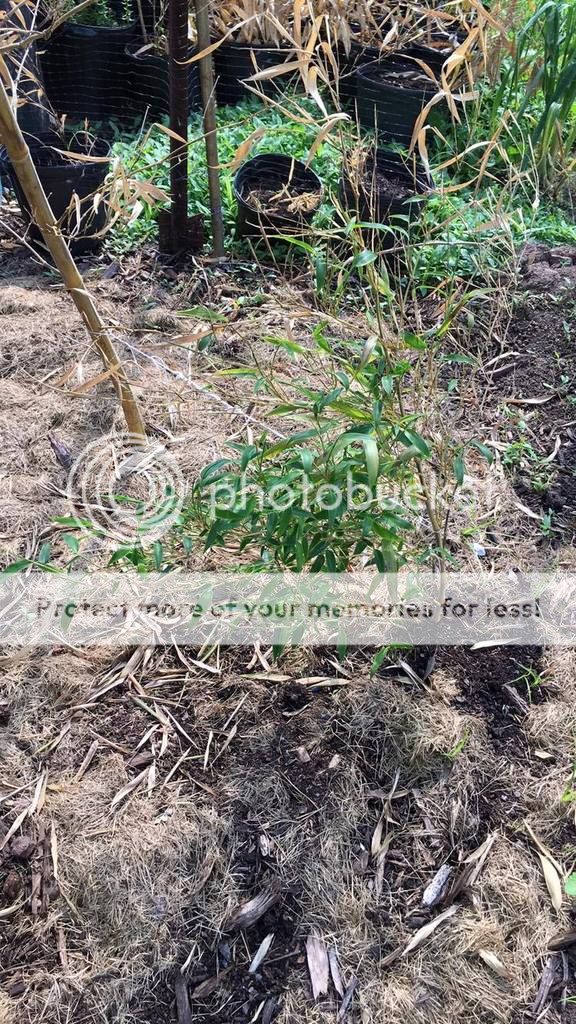

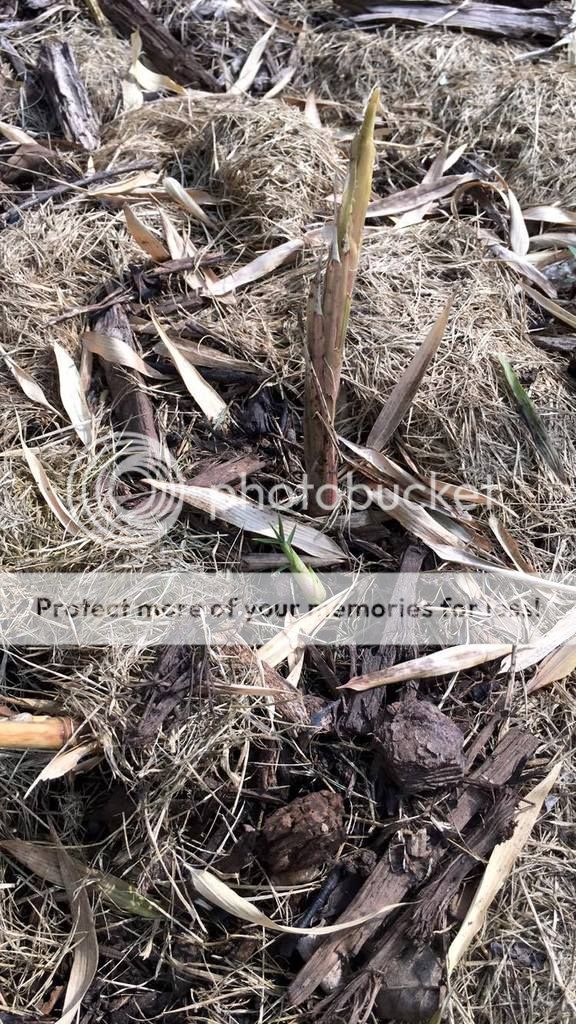
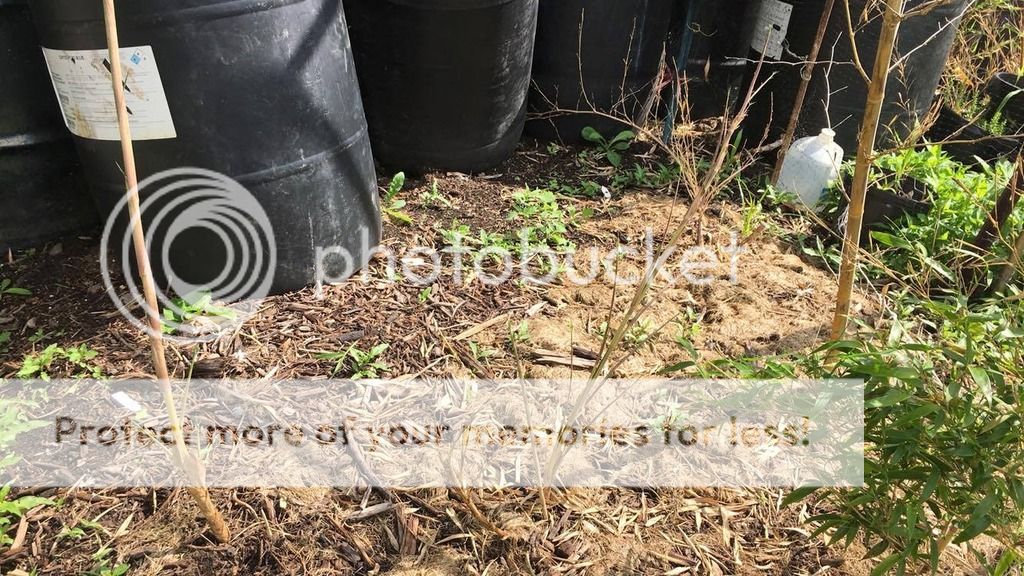
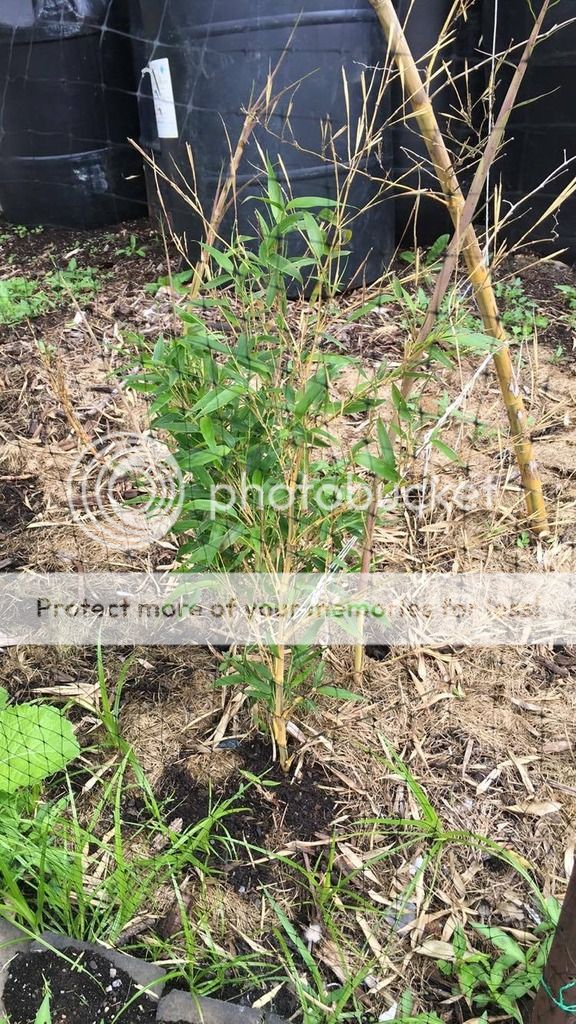
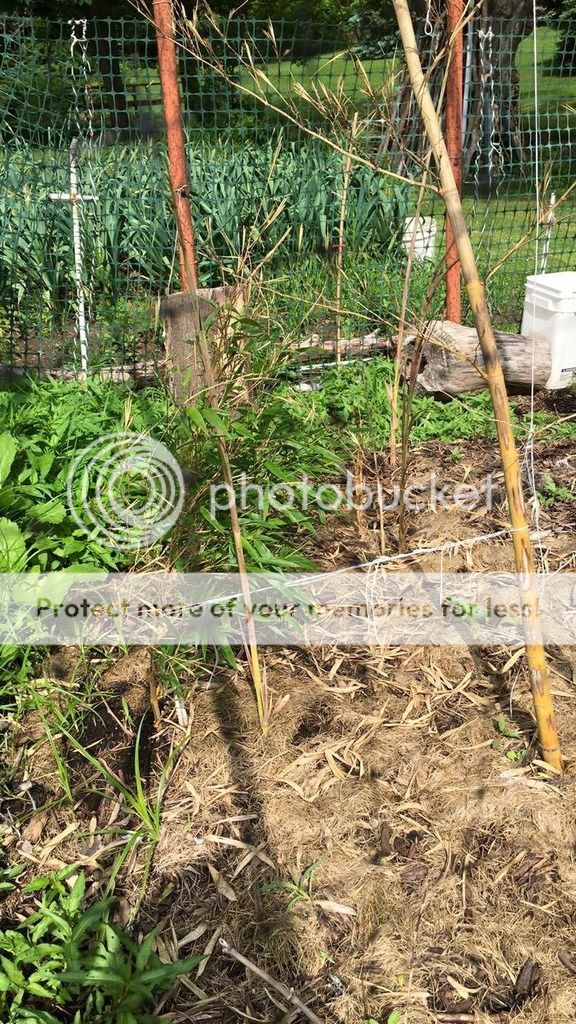
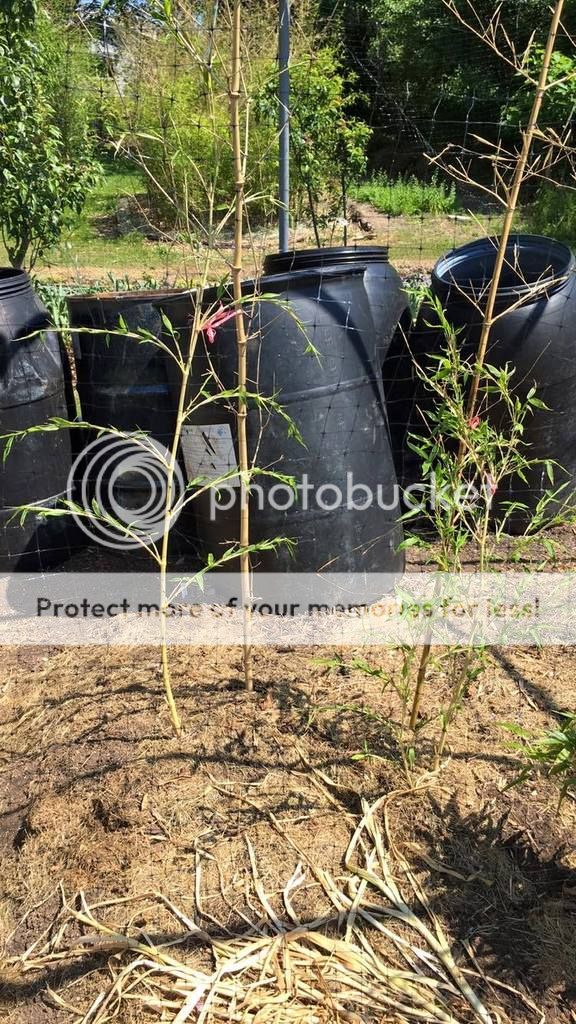
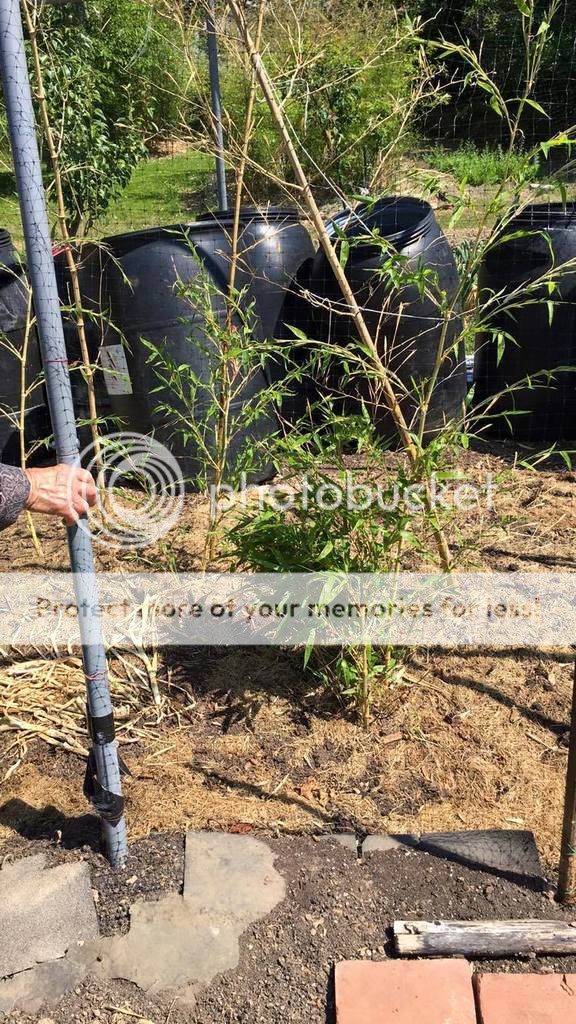
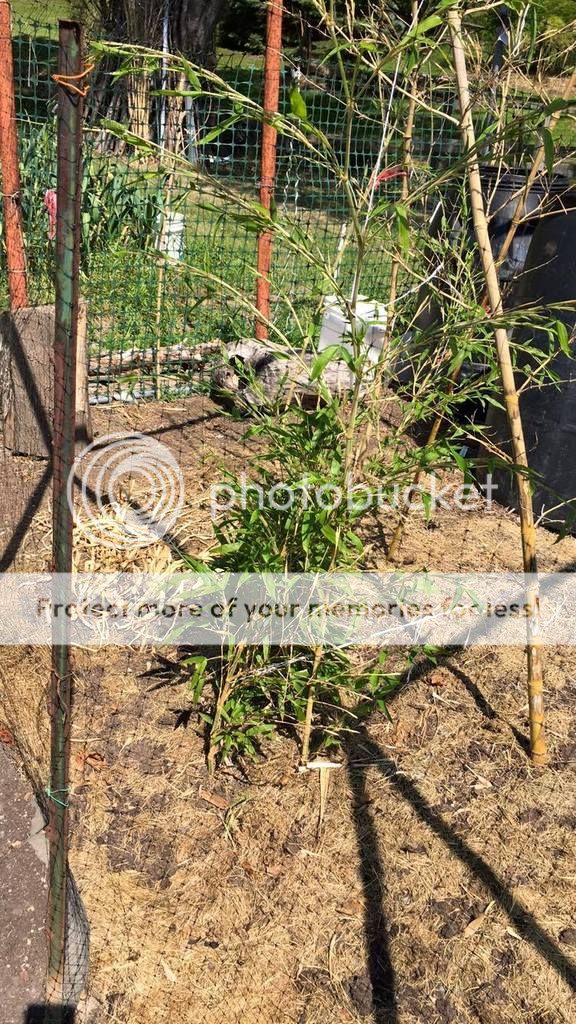





It would be great to see into the future and find out how big in diameter the culms are going to be! I had planted a p. nigra (henon) about in 2002 or so. It's now 2012. The soil it is in is very poor, subsoil and rocks, our zone is 6a, but the bamboo is on a hill which gets a lot of wind especially in the wintertime. It has spread very slowly, right now the grove is approximately 20 feet long (we have to mow it so it isn't very wide), the culms are about 1 1/2 inches in diameter (we had a mild winter where it didn't go below 0 degrees) and they are about oh...maybe 15 feet tall. I am assuming that if the soil was much better and it was in a more sheltered site, that the bamboo would be doing much better than it is. I have never protected my bamboo except when it was very young (I just used some black landscaping fabric and wrapped that around it, which seemed to help a lot, instead of bending the canes down. I left a hole in the top as well so it wouldn't heat up so much too. You may want to try this, it seemed to help it a lot at least in the early days of it's planting. It was yellow for a long time (lack of nitrogen), but we started peeing on it which made it green up big time. Best of luck to you and your bamboo! I'm going to plant a p. edulis, but will try to make a much better planting site this time.
ReplyDeleteThat's pretty big for a henon. I potted mine up because it was upsizing too slow, and spread too quickly without enough cold hardiness. When a bamboo is less hardy, it can keep getting set back in size for every winter it top kills. Your's is as big as my Dulcis which is a bit hardier than henon.
DeleteTarping to the ground over the winter, especially with a cotton based tarp doesn't really heat up. When they can no longer bend to the ground, I can also protect them by tying lots of culms together and shrink wrapping them vertically, but many of the are hardy to stay evergreen without protection now.
As far as the most powerful fertilizer, I've found that chicken manure seems to work the best so far.
Oh, also you may find the website needmorebamboo.com a great way to see how moso and others fare in zone 6a. I read his account of moso, which will help me in choosing the planting site, as I didn't know it was an early shooter. http://www.needmorebamboo.com/mosopics.html
ReplyDeleteI think his Anderson clone is the only one getting to 2 inches in diameter. You could probably contact Needmore himself, or go to the forums and ask for someone to send you one.
DeleteMy moso bicolor will take a while before it is available since I already promised a few people divisions. Luckily, I've figured out how to force small dividable shoots to form already so once this gets bigger,it should be easy to get divisions.
Me again! Hey, if you are looking for a bamboo that is supposed to give good sized culm diameter, supposedly phyllostachys parvifolia is supposed to size up well (4 inches) in zone 6. As usual there is conflicting information, needmorebamboo.com says it has an A- rating for cold hardiness where he grows it, and bamboo garden center claims that it's hardy to -5 degrees F, so who knows! I only started mine last year, so far it is still alive, but we had an extra mild winter last year so who knows. I just hope it's hardy!
ReplyDeletehttp://stevespeonygarden.blogspot.com/2012/06/bamboos-leafing-out-2012.html
DeleteMoso Bicolor is not the only bamboo I have. From my own experience, parvifolia is a couple notches hardier than p nigra henon, but not the hardiest.
I've actually taken well over 100 divisions off my parvifolia so far since it was planted 3 years ago. This species seems to be the fastest at responding to fertilization ie horse manure/ compost. You can find out a lot more about it on bambooweb forums.
Steve, I had written you a message in the past on facebook. Hope you are well. Noah Bell had lightly talked with me about you trying to import a tubaeformis and another specimen. :) I have kikko, bicolor and an authentic nabeshimana myself. I was noticing that it might have been too early for you to make divisions of your Bicolor in your photos, for it to be more healthy, it appreciates to not be disturbed for a handful of years so it can really be established energy wise in the rhizomes. Especially since I can also tell you have colder temperatures because of your covered area (greenhouse) for the bicolor, where you live. Maybe people had wanted to purchase some divisions from you, that is why you had chosen to do it so early. Send my best though, hope is all going well for you.
ReplyDeleteI've been able to grow this with aided conditions for a while however I will eventually move my rare collections of boos down south once I get the chance. It is not fun when you need a greenhouse to keep your plants alive.
DeleteI appreciate the detailed explanation you provided here. It’s not often that I come across content that is both informative and easy to understand. Well done!
ReplyDeletetarpaulin
If you follow the bamboo enthusiast facebook page, you can see some of the bamboos I just started again in 2025. In Georgia now so there are no longer any environmental threats to create setbacks.
DeleteKeep up the great work!
ReplyDeleteCoir Door Mats
this type of article is very helpful for us!
ReplyDeleteIts one of the best blog i have came through.
black tarpaulin